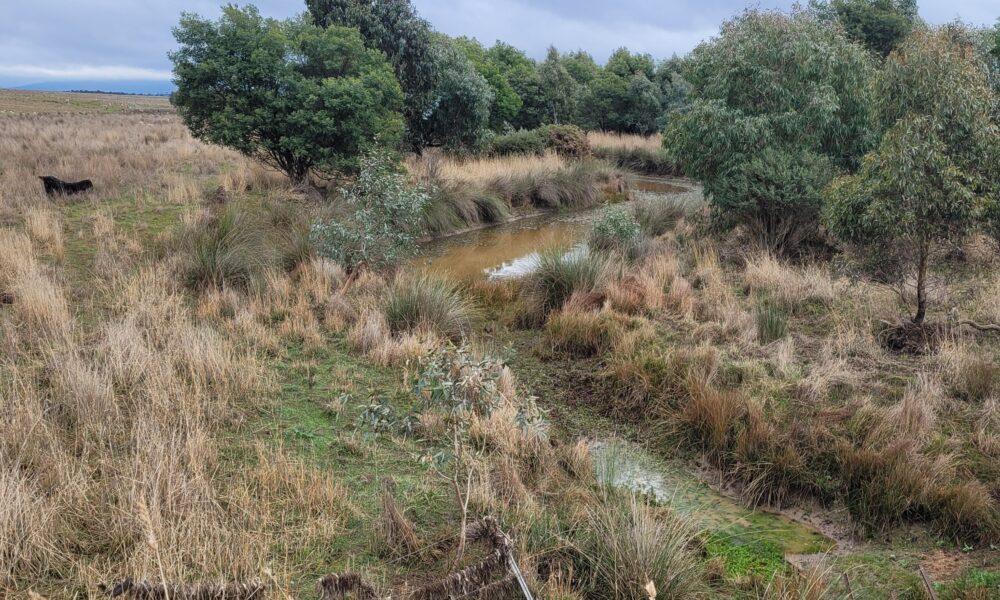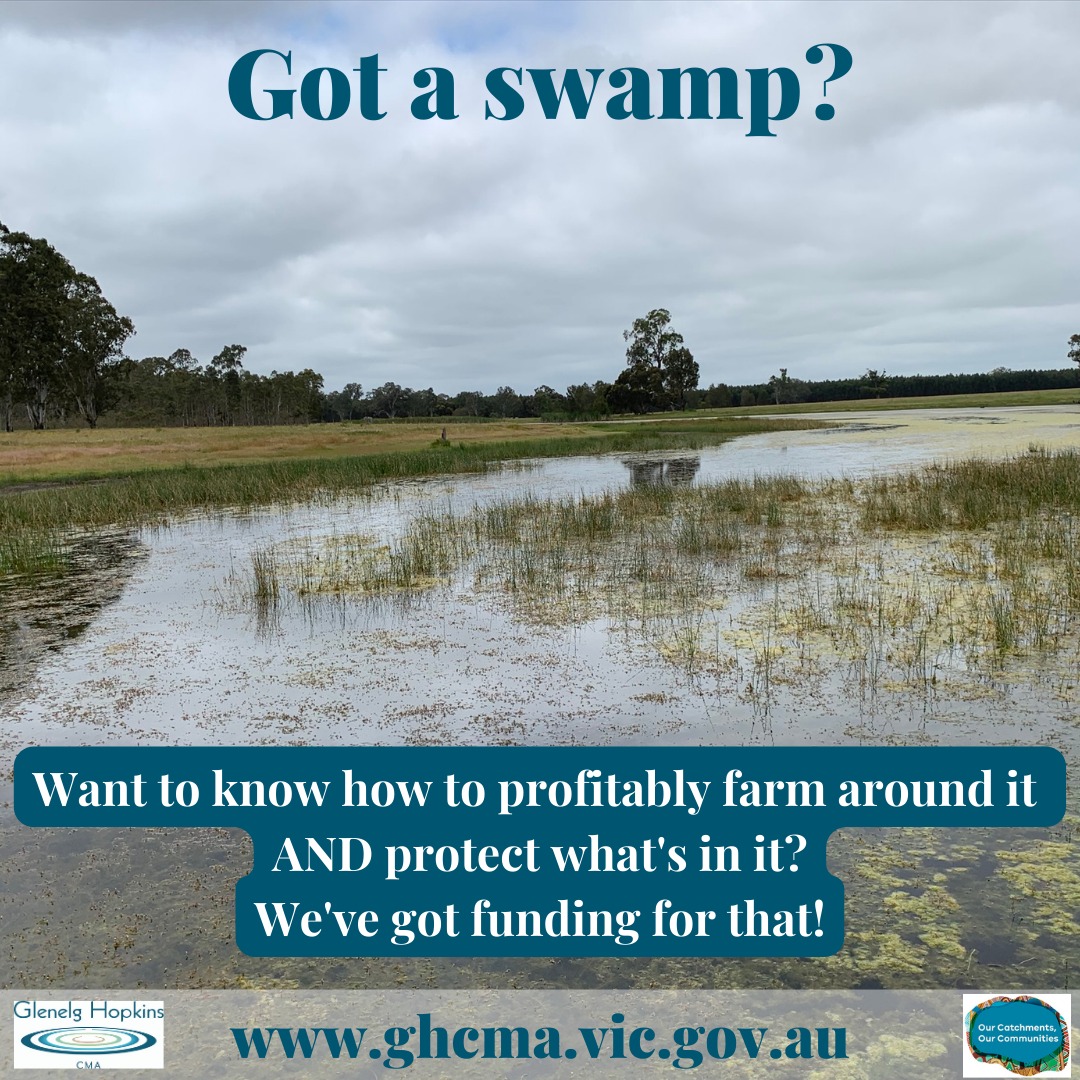Landcare news
Learning and Training
- Online Workshop: Accelerating Wattleseed Production for the Australian Native Food Industry: An online workshop to be held on Friday the 7th of July looking practical insights into farming wattle seeds which has enormous potential as a regenerative form of agriculture. Get tickets here.
- Farm Business Resilience Program: Looking for ways to prepare your farm business for success? The Farm Fitness Checklist helps to identify areas and opportunities to strengthen your farm business.
- Online RCS Grazing Clinic: This course runs weekly on Mondays over 12 weeks. The Online RCS Grazing Clinic will develop your skills by covering the principles and practices of grazing management including how to design and manage regeneratively, and how to use grazing charts as a planning and decision-making tool. Find out more.
- Online Regenerative Cropping Workshop: This online course includes 8 live weekly sessions focused on how to profitably transition towards a cropping system that improves soil health and returns, with lower risk. Find out more.
Sustainable Agriculture
- Carbon Scout is live: Carbon Scout is an unbiased financial feasibility tool for carbon farming. It allows you to quickly assess profitability, understand the business case and identify the best pockets of land for a carbon project. It breaks things down into simple steps, explains all project costs, identifies success factors, highlights risks and shows cashflow timing. Find out more.
- A farmer’s handbook to on-farm carbon management: This nifty little handbook aims to support producers with practical information on the feasibility of carbon sequestration activities on their farm. As carbon storage and sequestration becomes more prominent in rural industries, producers may be considering the opportunities and challenges that come with participating in a formal carbon sequestration scheme. Order a printed copy ($60) or download a pdf for free.
- Farm Dams – Methane Emissions Research: Deakin University’s Blue Carbon Lab is seeking access to farm dams for research into farm dam methane emissions. To express interest in the study please complete this form.
- On-Farm Emissions Action Plan Pilot: The Victorian Government has commenced the On-Farm Emissions Action Plan Pilot as part of its commitment under the Agriculture Sector Emissions Reduction Pledge to provide practical information, tools and services to support farmers to understand and reduce emissions. Read more about climate and agriculture.
- New snail guide available: Have you been experiencing snail issues in your paddocks? A new integrated snail control guide has been developed for Australian grain growers. Find the guide here.
- Using seed nurseries to restore Goodwin Station: Goodwood Station, a 90,000-acre property – that’s about half the size of Singapore – is restoring the land with the help of “seed nurseries”. Find out more.
- The story telling power of agritech: Agritech tends to be defined as innovations that help farmers become more efficient, more profitable, and more sustainable. Beef producer, Robert Mackenzie, is using agritech to capture, record and share the sustainability story with his consumers. Read more here.
- Download the Updated PestFacts Reporter App: Use PestFacts SE Reporter to let us know what you are seeing in the field, or to request help. We’re interested in hearing all questions and observations relating to pest or beneficial invertebrate activity in grain crops and pastures – even the ‘usual’ ones! The app has just had a major update and is available at no cost to users. Download the app here.
Protecting the Environment
- Hope for a successful biological control for serrated tussock: The Victorian Serrated Tussock Working Party has contributed funding towards an interesting research project in New Zealand, that is exploring biological control options for serrated tussock. Please find the research summary update here.
- Attracting and caring for amphibians in your stream, creek or wetland: Agricultural properties are important for Australian’s native frog species. Dams, ponds, wetlands and waterways provide habitat and refuge, especially during dry periods. Learn how to promote amphibian populations on your property.
- Hidden carbon: Fungi and their ‘necromass’ absorb one-third of the carbon emitted by burning fossil fuels every year. Read more here.
- Saving Large Old “Hero” Trees and Their Life-Sustaining Hollows: A comprehensive overview of why large, old trees are so important in our landscape. Watch the YouTube recording here.
- Restoring Native Grasslands: This is a great series about why and how to restore a grassland on your property. Recreating the Country blog
- Rewetting dried wetlands could stop 100 billion tons of CO2 emissions: Half of the planet’s wetlands are dried out or degraded and rewetting them could limit more greenhouse gas emissions this century than restoring global forests. Read the New Scientist article.
- State of the Climate report: Continued warming of Australia’s climate, an increase in extreme fire weather and length of the fire season, declining rainfall in southern Australia, and rising sea levels are some of the key trends detailed in the latest State of the Climate report, released by CSIRO and the Bureau of Meteorology. Read the report
Citizen Science
- Birds in Backyards Winter Surveys: Simply spend 20 minutes somewhere you can view birds – your backyard, or other favourite space, record the bird species you see and count how many there are. Head over to Birdata (http://birdata.birdlife.org.au/) and register today!
- The Glenelg-Hopkins Soundscapes Project: You can volunteer to process acoustic monitoring data collected through the Australasian Bittern Recovery (Glenelg-Hopkins Catchment) Project. Check it out on Arbimon.
- FrogID Week 2022 – over 32,000 frog records gathered for research and conservation: FrogID Week has once again rapidly gathered data for frog conservation, receiving more than 3 frog records per minute and gathered data from over 4,600 concerned citizen scientists. Read all about it!
Webinars and Podcasts
- Re-greening the Planet: Soil Innovations and Ecosystem Restoration: This series of 4 webinars looks at soil food webs, regenerative land management and strategies for soil regeneration. Register for the 4-part series here.
- Victorian Farmers Federation Podcast: This podcast series discusses issues affecting all of us on farm, from bog recovery and mental health, to livestock management and financial support, Tune in HERE or search the Victorian Farmers Federation podcast on your favourite podcast streaming app.
- Carbon Conversations 2023: The Carbon Market Institute presented a series of Carbon Conversations in January and February. This short series tackled three key climate policy and submission developments, as Australia collectively began a substantial period of domestic climate policy reform. Watch the recordings online.
- From Mono-Culture to Poly-Culture Cropping: Hear from croppers who are growing multispecies crops as a way of building soil health and improving biodiversity. Listen to the podcast here.
- Rehydrating Thirsty Land, Techniques to Combat Drought and Erosion in the Rangelands: A short video looking at a case study of how to manage erosion due to drought on a large scale in Quilpie, Queensland. Watch the YouTube video here.
Funding and Support
- Landcare Australia Grants: Landcare Australia works with governments, corporate and philanthropic organisations and donors to facilitate funding for good quality, hands on projects and programs that will improve environmental outcomes for the Landcare community. View current grants online.
- BushBank Program – Habitat Restoration on Private Land: The Victorian Government is investing $30.9 million to revegetate and restore at least 20,000 hectares of native habitat across private land in Victoria. More information: go to Habitat restoration on private land (environment.vic.gov.au).
- Support Plantation Establishment Grants: 3 rounds of grants to support the establishment of new long-rotation plantation forests to assist the sector in responding to the projected growth in demand for local timber resources, increasing domestic timber supply and helping to reduce Australia’s carbon emissions by storing the carbon in timber. Provided by the Department of Agriculture, Fisheries and Forestry. Find out more.

2023 Upper Hopkins LMG President’s Report

Jack Tucker, President
I would like to begin my Winter presidents report with a big welcome to our new facilitator Nick Moll! I won’t go into too much detail as Nicks appointment has been widely covered already through local and social media, suffice to say as a group we are very happy to have him onboard!
In terms of succession from Ayesha to Nick, things have gone very smoothly, and on behalf of the group I would like to thank Ayesha for enabling this and continuing to make herself available to answer any of Nick’s queries.
In this newsletter I would like to talk about the importance of ‘paddock trees’. Obviously large parts of our area are open arable plains country, and due to logistical constraints with cropping it is not practical to establish standalone trees in these areas. Non arable areas which exist on every farm, such as rocky, wet or steep country are all great spots to consider planting stand-alone trees. Trees dotted throughout the landscape are invaluable in terms of habitat and refuge sites for everything from Wedge Tailed Eagles down to the smallest invertebrates. There is also the obvious production benefit of shade and shelter for livestock through lamb survival and increased growth rates. From a political point of view earlier in the year at a federal level there was a call for mandatory shade for all livestock. Given the level of scrutiny livestock producers are now under in terms of animal welfare, we can assume it will be just a matter of time before this is expected.
Paddock trees are not hard to establish depending on the level of stock pressure. Allison from Keringle Native Nursery has supplied some pictures of her commercially available triangular core flute guards which have proven to be very effective in recent years. There is also a picture of a mesh type guard which we have been constructing and using due to the added pressure of our meat sheep. In areas with no stock pressure, eg non arable areas within designated cropping paddocks, it can be as simple as using a basic rabbit proof guard.
Remnant paddock trees are critical habitat for a vast amount of wildlife throughout our area and beyond, and as such it is extremely important to protect them as best we can. It is also important to remember old remnant trees, due to the habitat they provide via hollows, are just as important for wildlife whether they are alive, dead, standing or fallen.
One of the most common mistakes seen throughout the area is cropping or cultivating too close to the trunk of a tree. As a rule of thumb it is widely accepted that cropping under the drip line is both seriously detrimental to the tree, and rarely results in any productive crop. Although crop may establish, shade and competition for moisture and nutrients from the tree generally results in little to no yield when it comes time to harvest. In regard to the tree, they have very small fibrous ‘feeder’ roots which form a network just under the soil surface. Like all plants in their natural state, they rely heavily on a symbiotic relationship with microscopic soil organisms, especially fungi, to perform at their best. Therefore mechanical disturbance through sowing, plus addition of seed and synthetic fertiliser which have been coated with fungicide and insecticide (standard practice) will have undesirable consequences for the tree.
Following on from protecting remnants, it is also vitally important to retain a good level of fallen timber in remnant areas. Fallen timber creates great habitat for a lot of birds and reptiles, and the invertebrates they feed on. One prime example locally is the Brown Tree Creeper. They love too feed on bugs and grubs and are generally only found where there is a good amount of fallen timber to support them. Connecting this back to the previous paragraph, rather than burning or disposing of fallen limbs (especially any containing hollows!), they can be pushed in under the dripline of existing trees, whereby they don’t affect the production area and significantly enhance habitat for wildlife.
As an aside from the production and biodiversity benefits of remnant trees, the cultural aspect can’t be underestimated. It is pretty amazing explaining to children that an old Red Gum, which may be 500 or 600 years old, has actually spent the majority of its life in in a landscape managed by local indigenous people pre European settlement. They are the only living link back to that pre settlement time.
Take home message – remnant trees are a national treasure so look after them!
As always, please spread the word re our group. It is very affordable to join, and gives members the option to access funding to assist with all forms of Landcare, from pest plant and animal control through to reveg work, fencing off waterways or wetlands and the list goes on in relation to advice and support!
Happy Landcaring!
Jack


A couple of examples of remnant Red Gums, prime habitat trees in the landscape. Photos kindly provided by Wayne Suffield.
2023 Upper Hopkins LMG Treasurer’s Report

Kelly Gellie, Treasurer
What a busy and exciting financial year we have had with our group – it sure has gone quickly! We have been successful with securing funding for several Victorian Landcare Grants this financial year and I know that quite a few of them are well underway with lots of tree guards going up in our community. We have also been successful during the financial year in receiving funding to run quite a few other events which have been outlined in more detail in previous newsletters and watch out for our most recent event ran in April 23 in this newsletter.
At our AGM held in October 2022 it was discussed that we would be increasing our membership fees for the 2023-24 financial year to $33 (GST inc) for a yearly membership and $88 (GST inc) for our three year membership. For those members that are due for renewal please expect a Tax Invoice from me in July with payment details.
We would like to thank all our current members and we are always happy to welcome any new members to our group.
If you have any Treasurer related matters, please don’t hesitate to contact me on treasurer@upperhopkins.org.au
Thanks,
Kelly
LOCAL HELIOTHIS MONITORING 2023
If anyone is interested in monitoring the movement of heliothis in the local area this Spring, please contact facilitator@upperhopkins.org.au
Soils, Compost and Biofertilisers: The Essentials
On the 6th of April 2023, David Hardwick provided a very informative and practical workshop, covering the topics:
- The range of alternative fertility inputs
- How to make biofertilisers, bioferments and biostimulants
- On farm composting: aerobic & fermentation
- How to make compost on-farm
- Monitoring and testing compost quality
- Using composts and biofertilisers
It was great to learn about how to create biofertilisers and discuss sustainable agricultural practises. David gave details on where we could source the relevant supplies and also encouraged the participants to utilise what they had on hand on our properties i.e previously used shuttles, plastic milk containers etc (which can be seen in photos
below). After the hands-on session there was a Q & A session which inspired some very interesting conversations. Each participant on the day was given a printed manual with recipes on how to go home and makeup these brews, which was a brilliant asset to have!
“Better soils” is a top priority for UHLMG. The Soil Health Team is very interested in engaging with myriad landholders to discuss new approaches to measuring, monitoring and maintaining soil health within the region.
For more information, please contact Jack at jack@rhyniepastoral.com.au
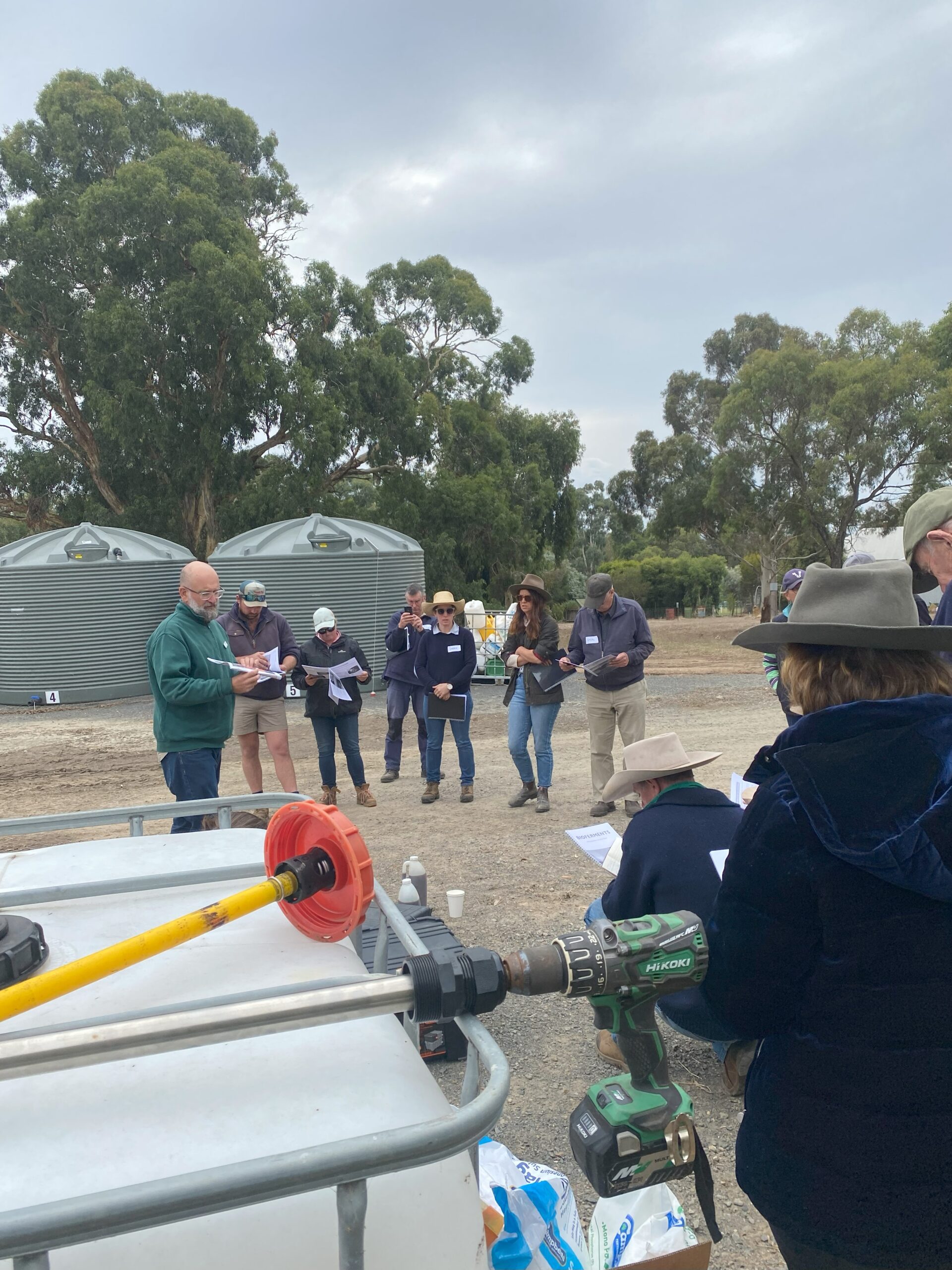
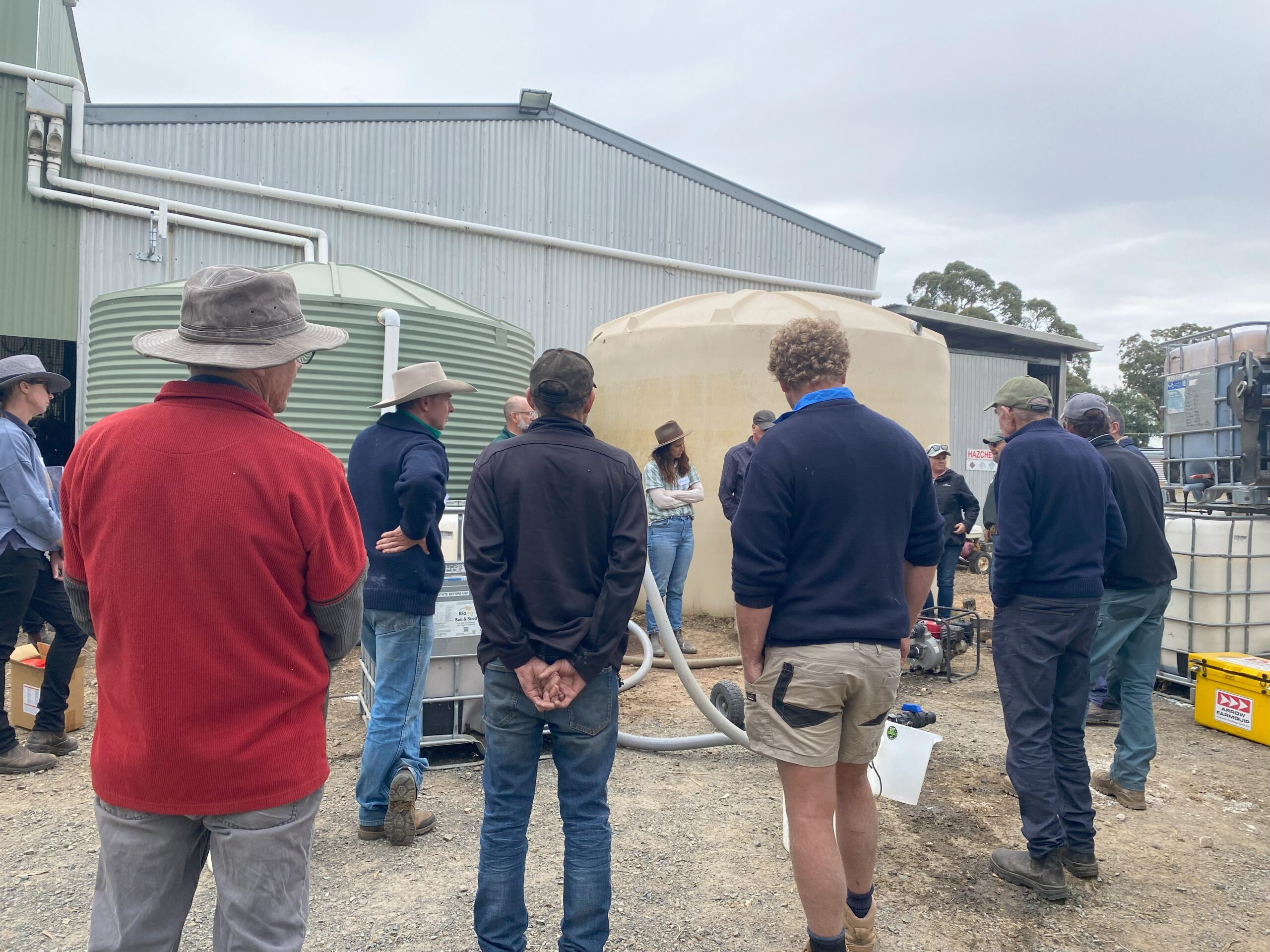
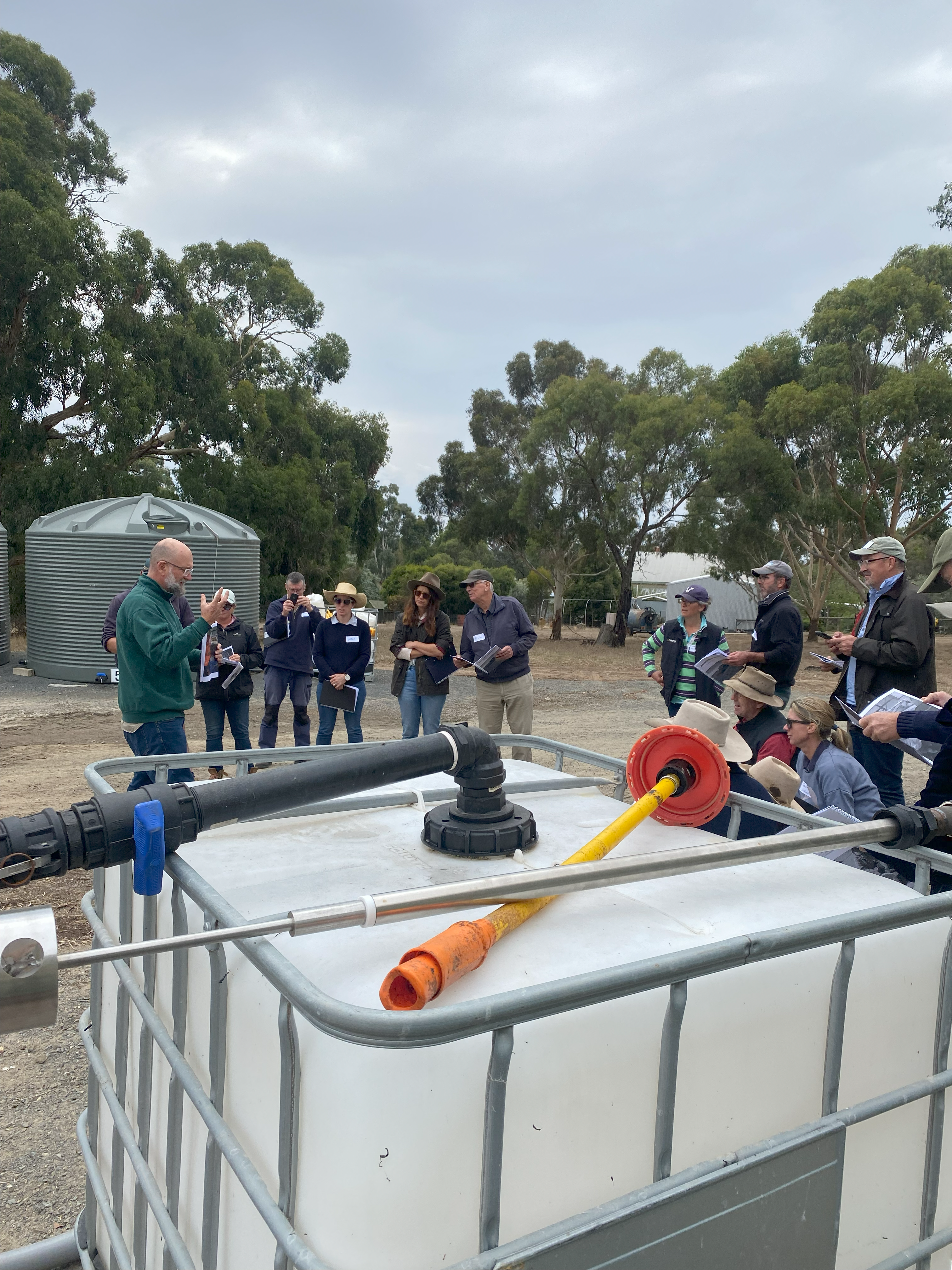
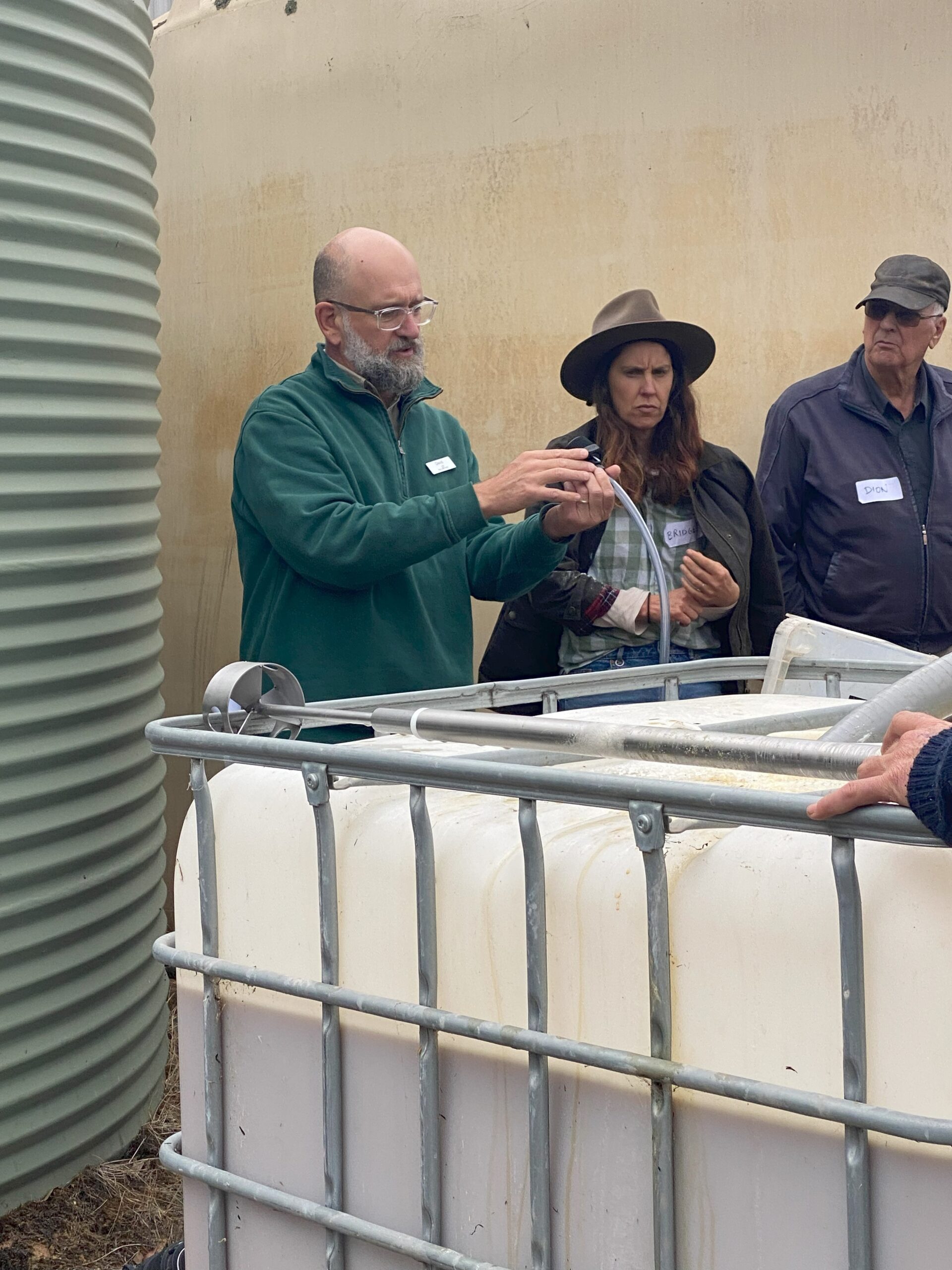
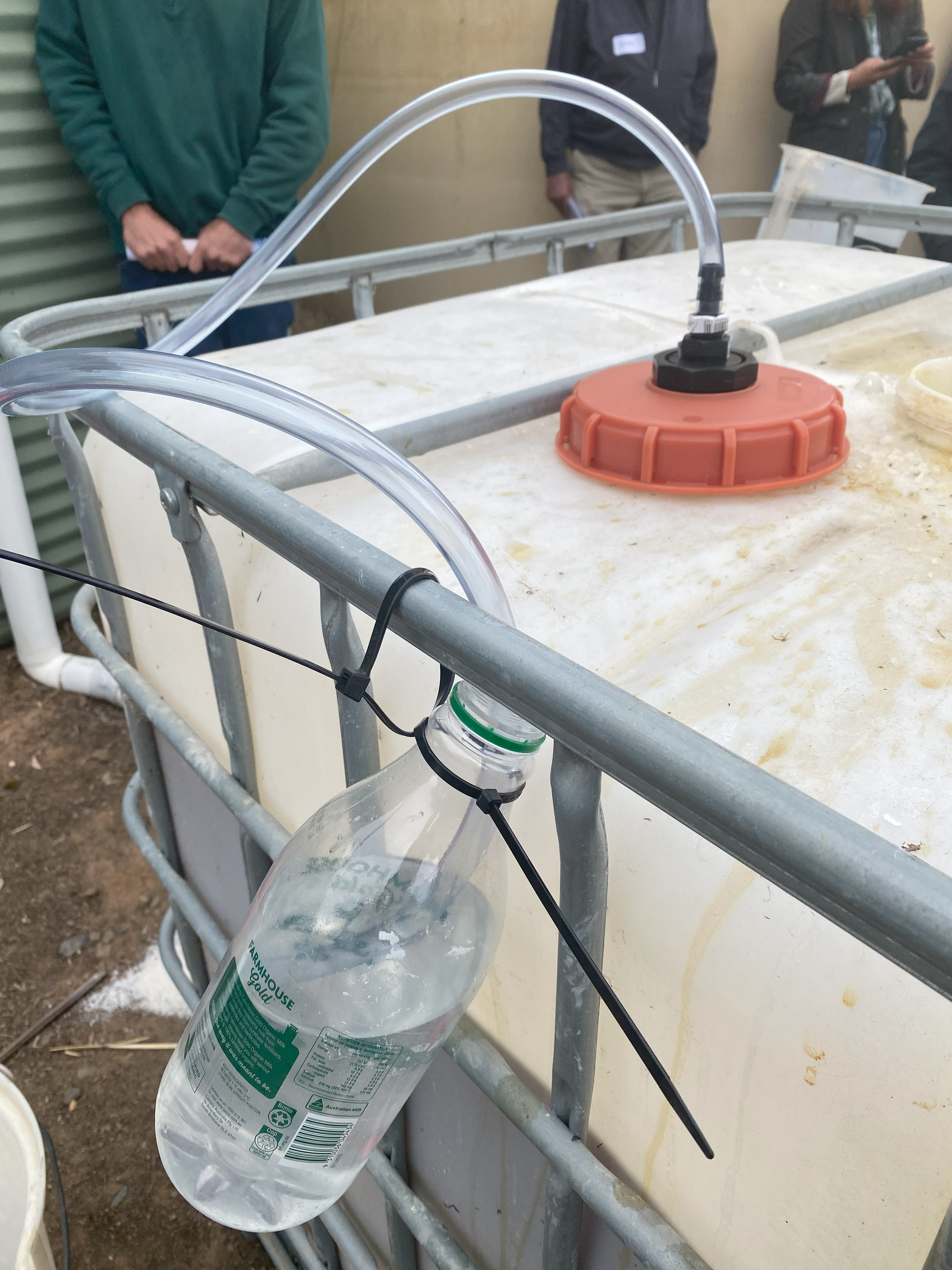
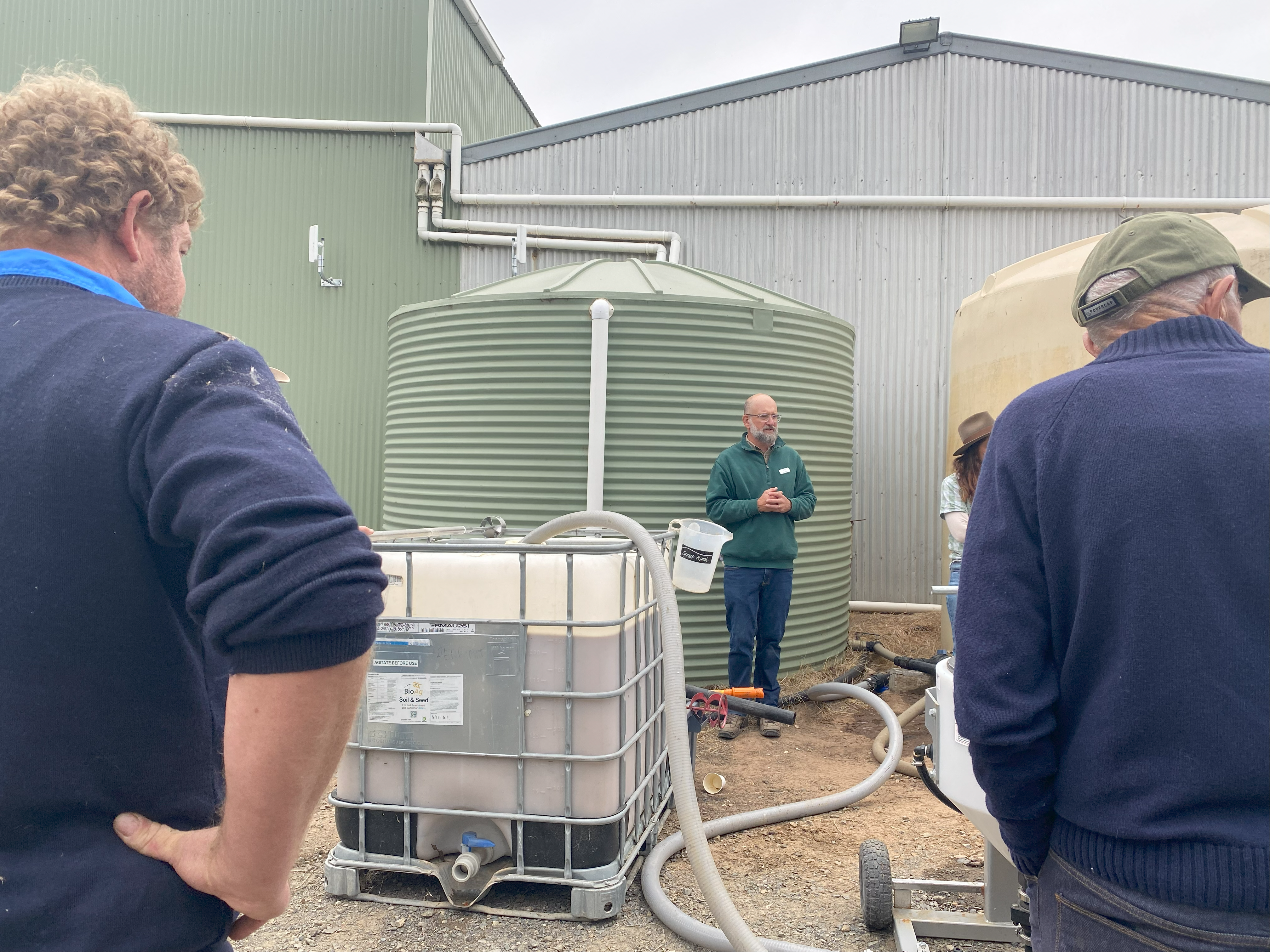

When you purchase your TRAN$ITION23 Conference Ticket, you get 25% off your next VicNoTill Membership! This applies to new members and current member renewals.
So if you have been thinking of becoming a member, this is the time to do it – simply fill out the questionnaire when booking your conference ticket, and we will take care of the rest.
You can renew your VicNoTill membership here.
You can purchase your TRAN$ITION23 Conference Ticket here.
Victorian Community Pest Management Group Volunteers Receive Australian Biosecurity Award
Victoria’s four Community Pest Management Groups (CPMGs) have been chosen to receive the Australian Biosecurity Award (ABA) in Canberra recently. The ABA’s recognise individuals, groups and organisations that have shown commitment to supporting and promoting Australian biosecurity and the systems that underpin it.
The CPMGs were nominated by Agriculture Victoria to receive an award under the community category for their role in the Weeds and Rabbits Project. The four CPMG Chairs recently received their award on behalf of their groups in Canberra.
The CPMGs include the Victorian Blackberry Taskforce, the Victorian Gorse Taskforce, Victorian Rabbit Action Network and Victorian Serrated Tussock Working Party who formed part of the Delivery Leadership Group, the project steering committee for the Weeds and Rabbit Project.
CPMGs consist of volunteer community representatives, and contractors, who provide education, engagement and extension services to landowners affected by invasive species.
The project attracted 4.3 million dollars and was a collaborative partnership between Agriculture Victoria and the CPMGs. The project was a biosecurity initiative aimed at improving the way established pest animals and weeds are managed in Victoria. The collaborative project model placed community at the table to guide investment decision making, critical for supporting community-led action on weeds and rabbits.
Invasive species cause substantial amounts of economic and environmental damage across Australia, with an annual economic cost alone at $24.5 billion per year. The four CPMGs demonstrated that they have the skills and solutions to tackle complex problems like weeds and rabbits.
This game-changing project delivered 223 workshops and events and engaged over 6,000 people during its lifespan. The project helped CPMG groups discover better pathways into community, to assist and build capacity, to provide direction and improved understanding of invasive species issues.
Following the project, outcomes observed included more effective knowledge sharing between stakeholders, community, government and industry collaboration, reduced reliance on regulation & compliance and effective community led programs.
For further information on the Weeds and Rabbits Project visit https://weedsandrabbitsstory.com/.
If you would like further information from the award-winning community groups, you can contact them through their social pages.
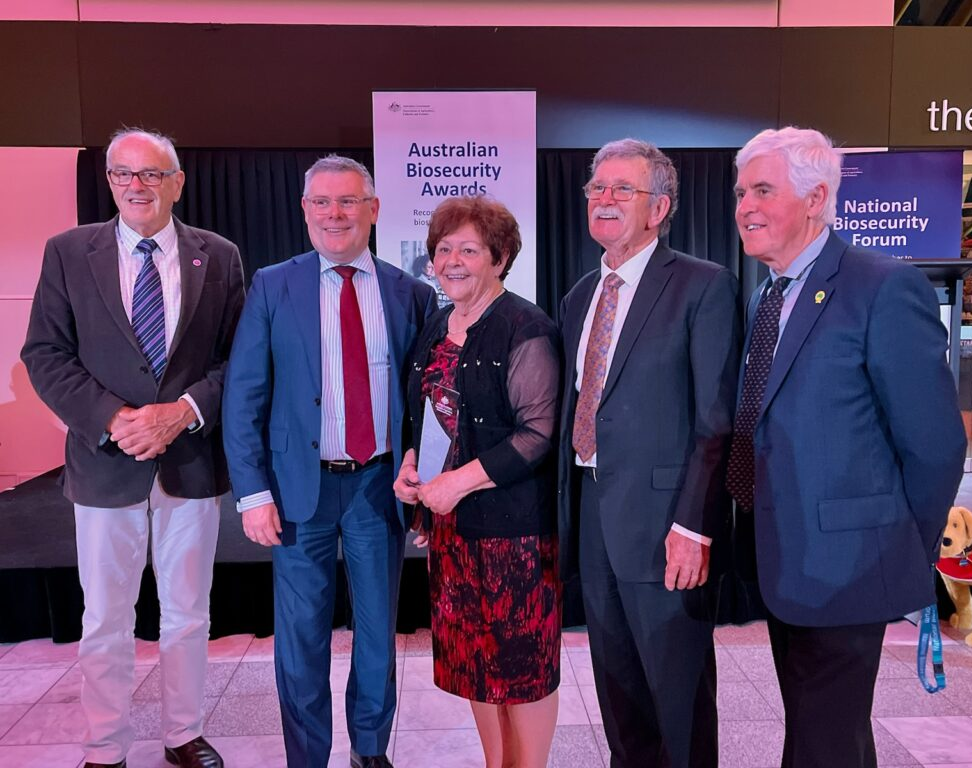
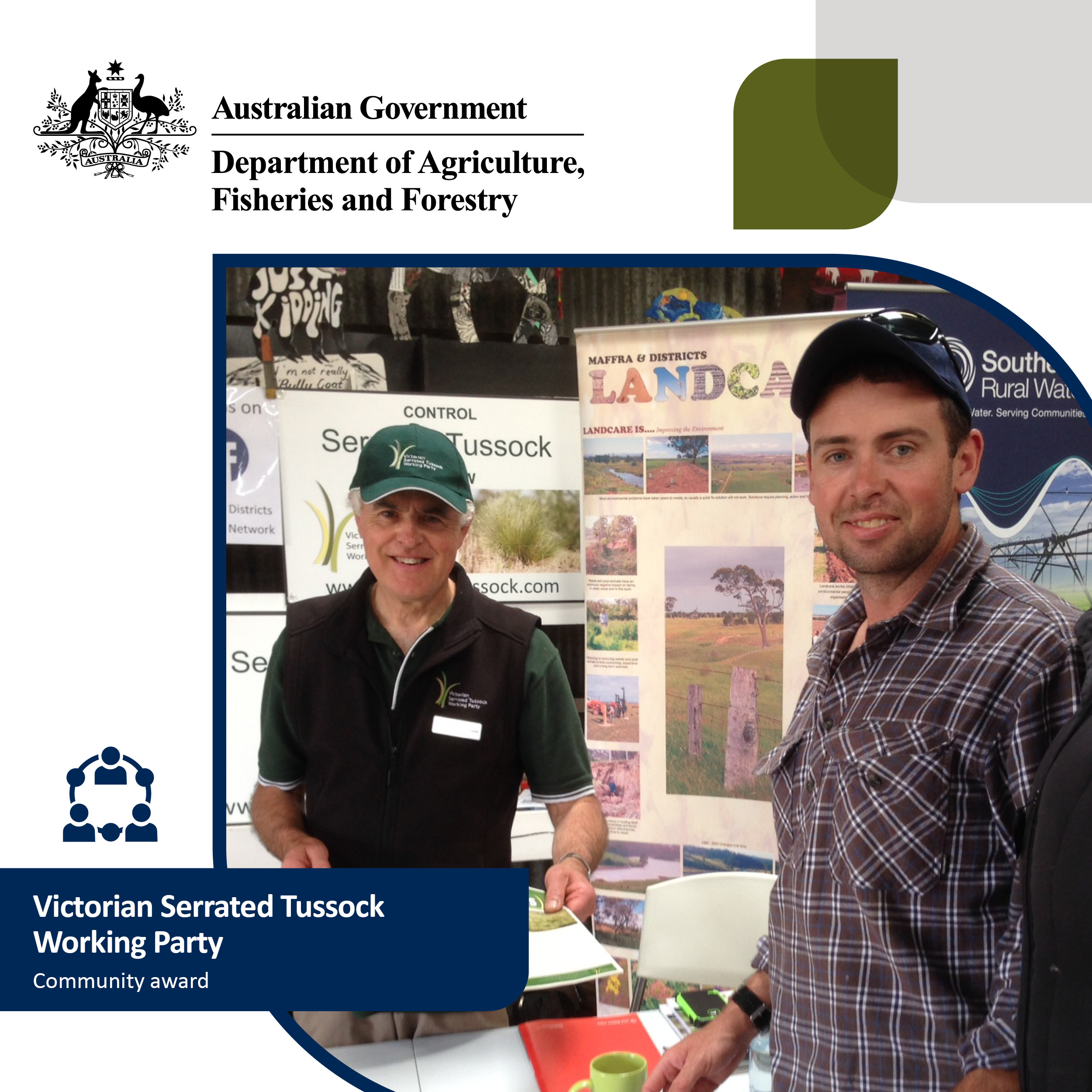

If you use waste tyres for silage production from 1 July 2023 you must be registered
From 1 July 2023, if you are using and/or storing 5m3 or more of waste tyres as weights for silage production on your farm(s), you need to apply for a B04 registration with us to make sure you are compliant with the law.
Application for a B04 registration is easy, free and can be done online in 5 minutes through our portal
If you do not already have an account, please sign up (at the top right of the page) when you enter the portal.
There is also a B04 guidance with step-by-step instructions to help you with the application process as well as more information.
If you have questions when applying for a registration, please contact us on 1300 372 842 or contact@epa.vic.gov.au.
For more information, please visit: https://www.epa.vic.gov.au/for-business/permissions/registrations/b04-guidance-on-waste-tyres-for-silage-production
Rare and Threatened Fauna found in Moyston District
Peter Homan, Wildlife Ecologist
Many species of frogs are found on Crown Land and farms throughout the Upper Hopkins region including several species that are listed as threatened. One of the threatened species is the Brown Toadlet Pseudophryne bibronii, also called Bibron’s Toadlet. This is one of many Australian frogs and reptiles named after famous French naturalists, in this case Gabriel Bibron (1805 – 1848). The toadlets are unique in that they walk rather than hop and, unlike other groups of frogs, they do not go to water to breed. Instead, the females lay their eggs in depressions that will later fill with water after rain or where eggs will be washed into nearby dams or creeks. The breeding season stretches from March to June, when males can be heard calling on still nights following substantial rain. As with all frogs the females are mute.
Since 2004, I have been visiting the Merrick property at Moyston West and Brown Toadlets have been recorded there many times. I have also visited the Tucker’s property numerous times since 2017, but despite several intensive frog surveys over the last six years we have not detected populations of the Brown Toadlet. I was due to visit the Tuckers in mid-April, a key time to find Brown Toadlets providing substantial rain had fallen in the preceding days. Fortunately, Adam Merrick reported heavy rain at Moyston West on the Saturday before my visit. Two days later the rain was well gone and the nights were calm and mild. With expectations high, Jack and I visited the Merrick property on the Tuesday night and the Toadlets were going crazy with well over 100 males calling. The males call from small burrows and can be difficult to catch, but after much effort we managed to catch two.
A couple of years ago the Tuckers purchased a lovely bush block north-west of Moyston. The vegetation on the block is mostly Heathy Woodland but several drainage lines exist that lead down to Mount William Creek. I had identified these low-lying areas as potential habitat sites for Brown Toadlets during earlier visits. After the successful night at the Merrick property, we decided to visit the bush block on the Wednesday night when conditions were still calm and mild. As soon as we pulled up to the first potential site we could hear a chorus of about 50 Brown Toadlets. The second site was even better with probably 60 or more calling. Fortunately, we had two excellent hunters with us, the Tucker boys, James and Johnny, and so we succeeded in locating and catching four toadlets (Fig. 1 & 2).
In late March I conducted a fauna survey of this bush block with Diploma of Conservation and Ecosystem Management students from Melbourne Polytechnic. We used several methods to detect fauna, including trapping insectivorous bats. Since European settlement many ground-dwelling native mammals have become extinct throughout south-eastern Australia. However, the microbats have fared much better than other groups of native mammals and over 20 species are still known from Victoria. About six species of insectivorous bats are common in all environments across Victoria including forests, wetlands, country towns, major cities and especially on farms. During this March survey our two bat traps set over two nights captured nine species of bats, including two uncommon species. These were the Gould’s Long-eared Bat Nyctophilus gouldi and Southern Freetail Bat Ozimops planiceps (Fig. 3 & 4).
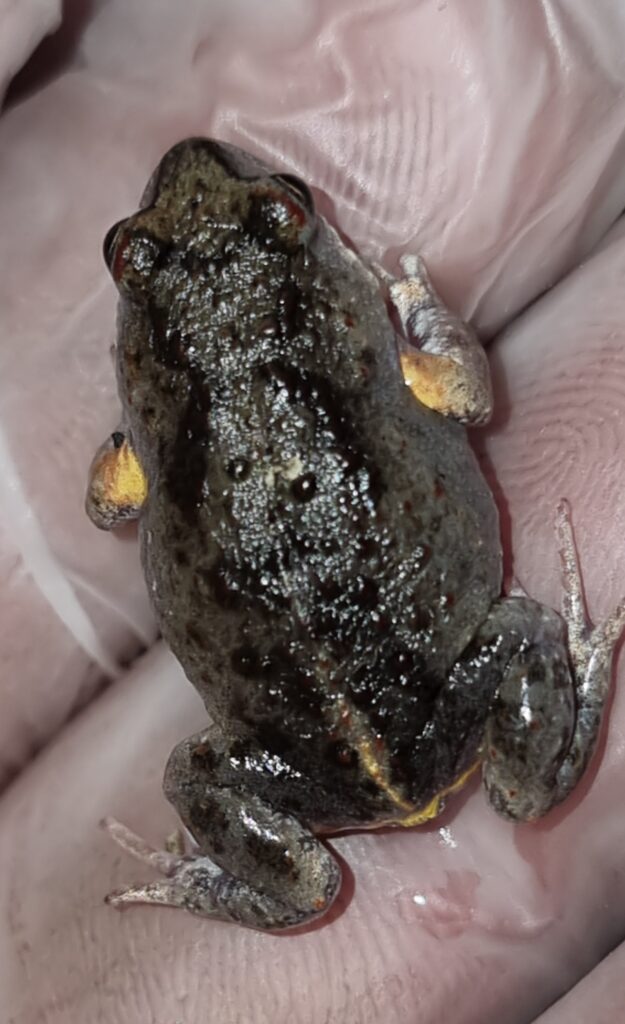
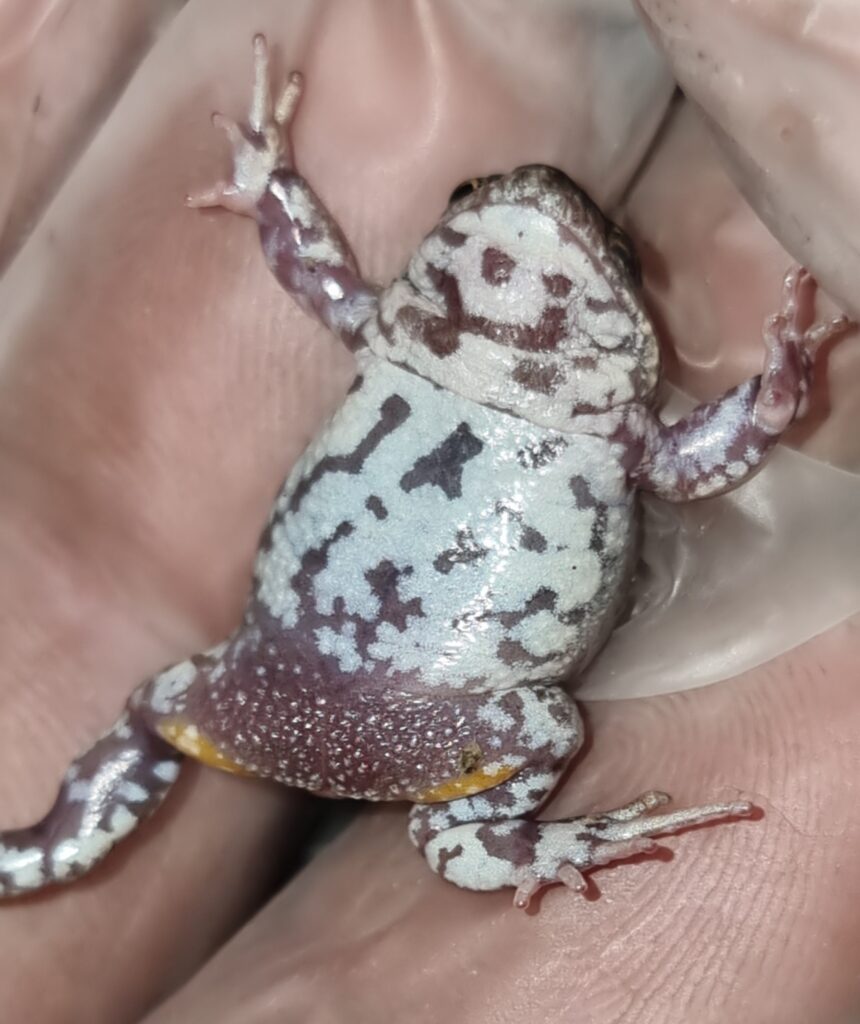
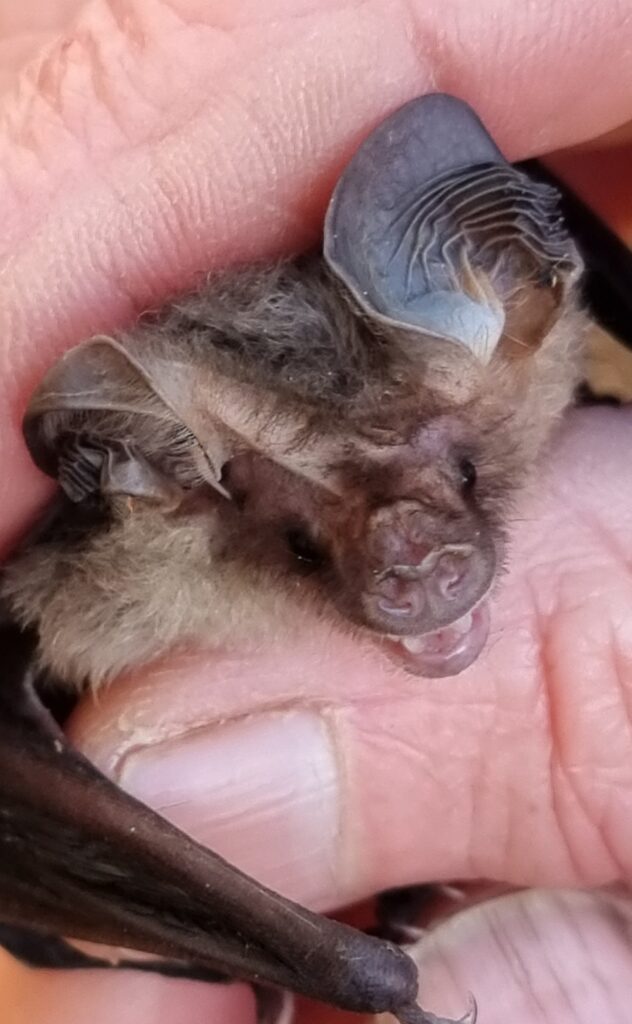
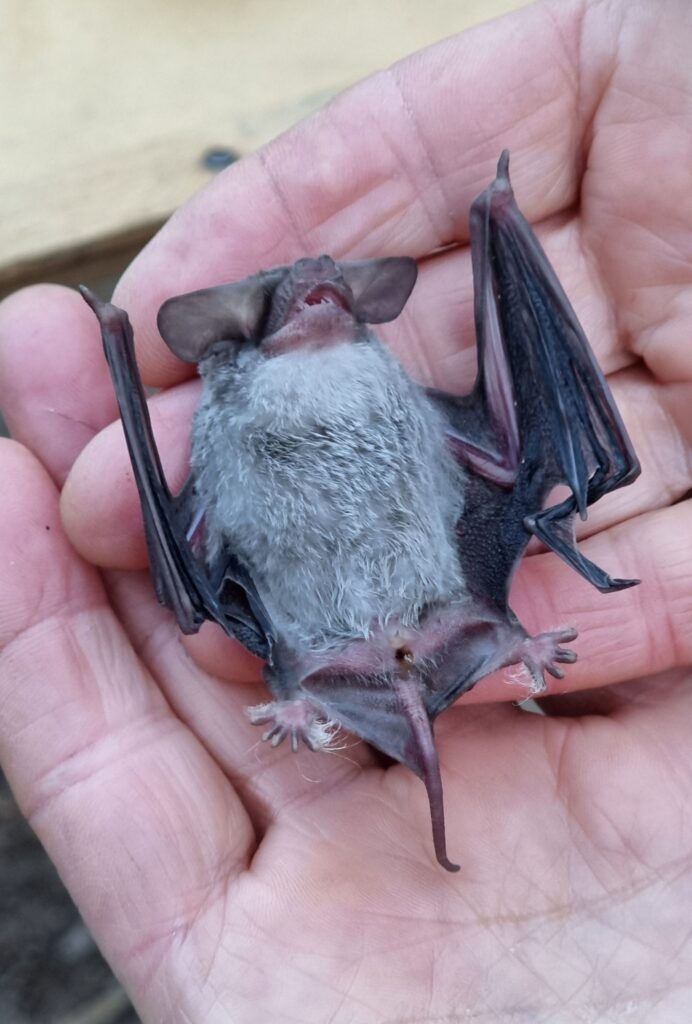
Acknowledgement: All bats and frogs were captured, handled and released unharmed under the terms of a research authorisation issued by DELWP.

Lake Bolac Eel Festival: The Healing Walk
The Healing Walk, a part of the Lake Bolac Eel Festival and helping raise the consciousness of connecting to Country for local First Nations and those interested, took place on Saturday, 13 May.
Fourteen walkers from all over the Western District and from a wide array of backgrounds commenced the walk at Wills Hill Road through dense fog on part of Peter and Christine Forster’s property just north of Maroona.
Massive granite boulders, lots of revegetation and macropod tracks were all veiled in heavy fog.
Peter Forster guided the group and was an excellent walk host.
At midday, the fog finally lifted when walkers took country lanes to the end of the 8 to 9-kilometre walk at Labrador Road.
A delicious lunch was shared prepared by the Willaura Bakery lunch and supported with a grant from the Lake Bolac Treasure Hunters’ Hall.
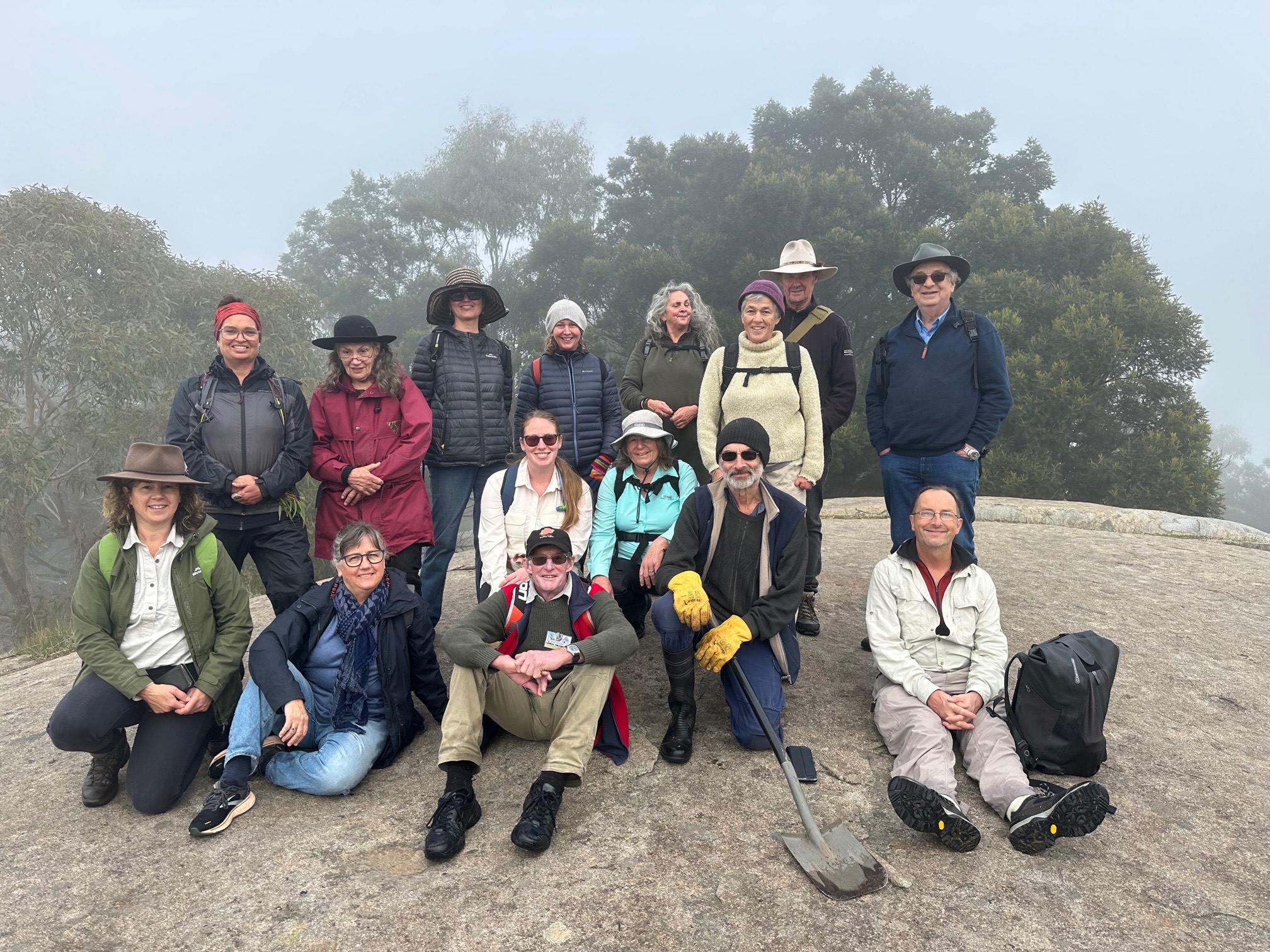


Ticket sales for Chatsworth House event opening soon! Keep an eye out for them at 2023 Field Day — Chatsworth House Pastoral

Urban Trees in Ararat and District
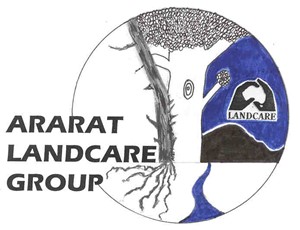
Nick Moll, Ararat Landcare Group
In June I had the opportunity to speak at two Climate Adaptation Workshops for Local Government about the Ararat Urban Tree Project and why urban trees are so important. The two events, organised and run by Hepburn Shire Council and funded by DEECA, brought together a range of speakers from exciting climate adaptation projects in our region.
The event focused on learning about the Grampians Region Climate Adaptation Strategy and how it can be used to enable climate change adaptation, as well as group discussions around existing climate adaptation projects, policies and actions and what can be done moving forwards.
This timed in well with the installation of our Urban Tree signage at our three demonstration planting sites: Laby Street, McGibbony Street and Gordon Street. Anyone can visit these demonstration sites and read a little bit more about the project on the new signs.
If you’re interested in planting an urban tree in your own backyard, why not pick up one of our urban tree booklets that goes through the benefits of planting trees in urban areas and the most effective sites to plant a backyard tree to protect your home from climate extremes, like the cold, windy weather we’ve been having!
Booklets are available from local nurseries, Council offices and libraries, Hotondo Homes, and local Landcare groups. Videos are available on the Upper Hopkins YouTube channel (@UHLMG).
To help Ararat Landcare Group assess the value of the information provided in the booklets and videos, there is a short survey available on the website. Your feedback is valuable to us!
For more information, please contact Landcare Facilitator Nick Moll facilitator@UpperHopkins.org.au.
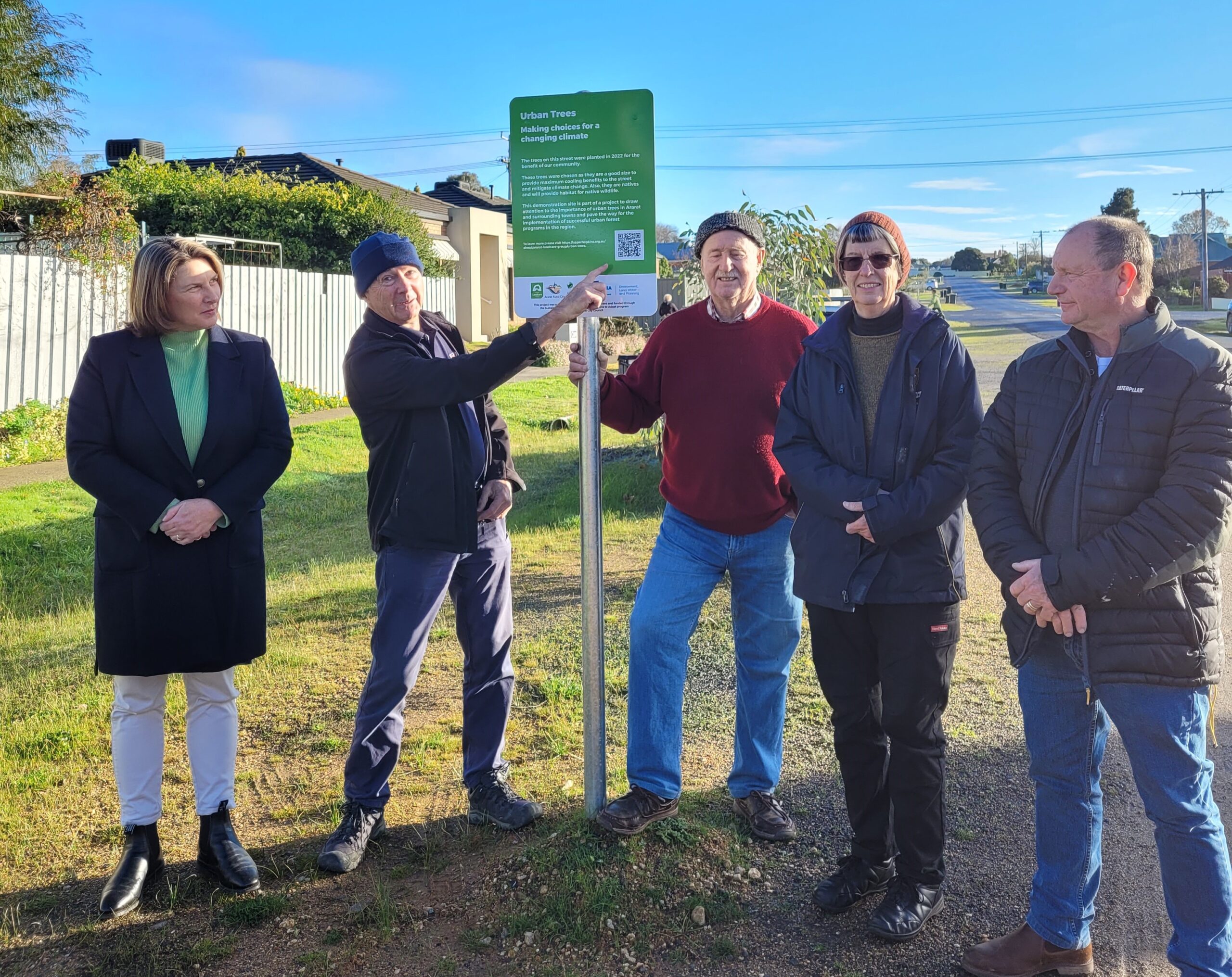

More information about the project can be found online on our website:
https://upperhopkins.org.au/about/ararat-landcare-group/urban-trees/
The Wetland Restoration Program is back!
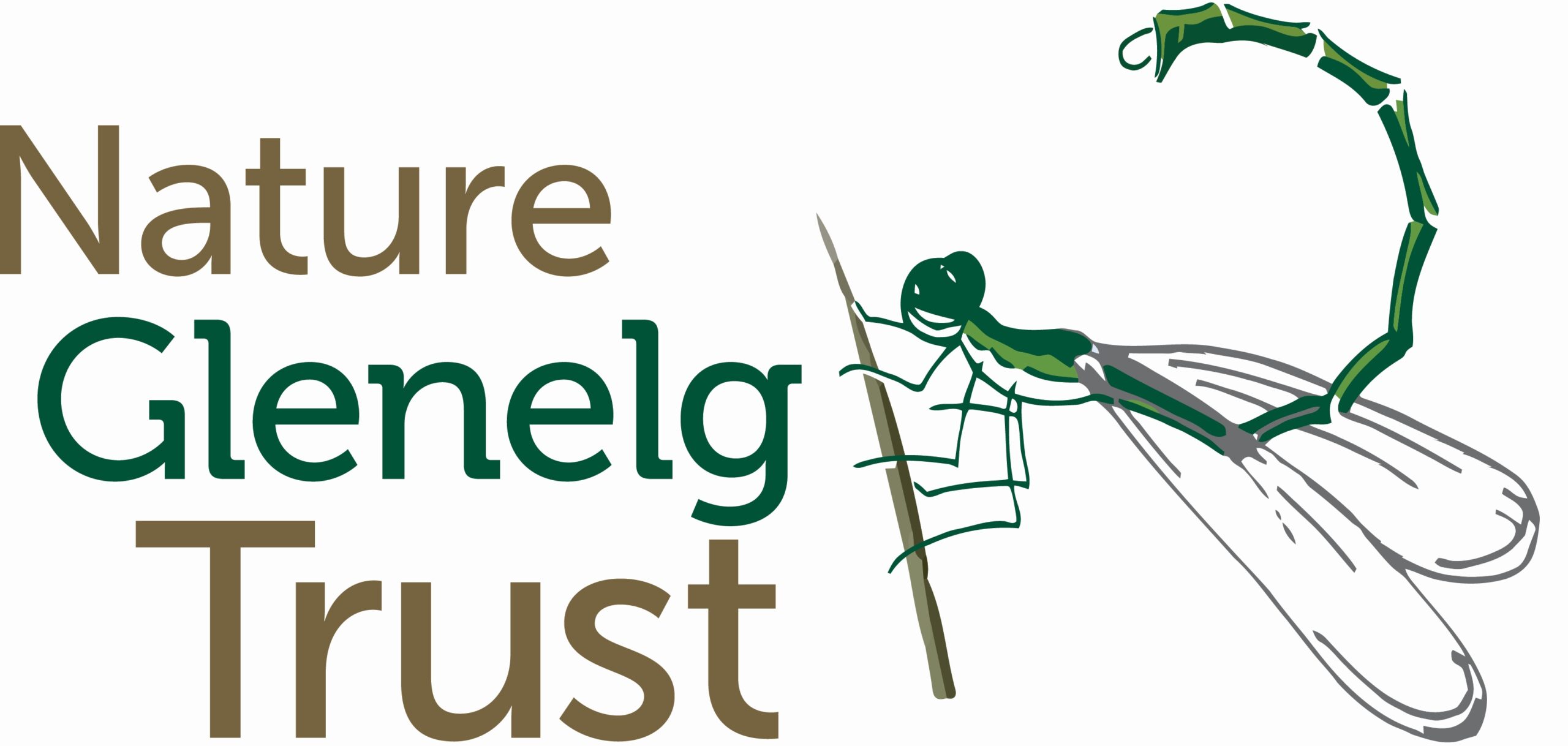
Ayesha Burdett, Senior Wetland Ecologist, Nature Glenelg Trust
Are you a private landholder interested in helping to rehydrate the Australian landscape, to bring back the range of amazing species that call our wetlands home?
Nature Glenelg Trust’s Wetland Restoration Program on private land is back, and we are here to help you. If you are interested in restoring a drained wetland and improving the hydrology of a site, get in touch!
Read more about the program here: https://natureglenelg.org.au/ngts-wetland-restoration-program-on-private-land-is-back/
We would like to hear from any landholder who has a potential wetland restoration site on their property. We will take the time to discuss your interests and priorities, working together to assess the wetland’s potential suitability for restoration and what type of support you might need to restore your site. Any wetland restoration will be conducted with for the mutual benefit of the environment and the landholder.
There are a lot of good reasons to get involved in wetland restoration through the WRP. For private landholders, wetland restoration could reduce the hidden costs of managing poor agricultural land while improving local ecosystem services (e.g., pollination, nutrient cycling) that can have direct benefits for a farming enterprise. In the future, there may also be opportunities to become involved in the carbon or biodiversity markets.
To learn more about the program in your region, contact Ayesha Burdett (ayesha.burdett@ngt.org.au, 0429 021 500).
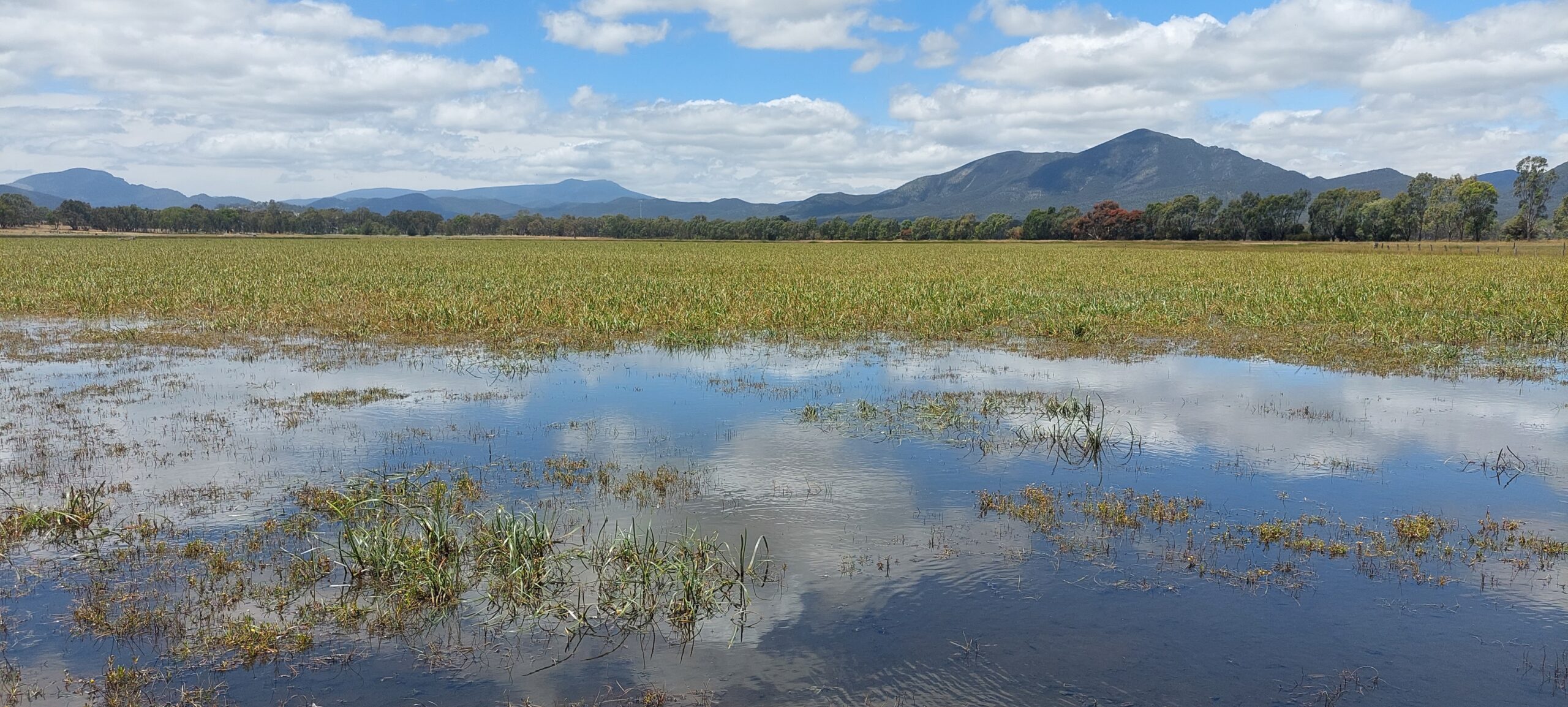
For more information on what the Glenelg Nature Trust is up to follow the link to their May newsletter: NGT News #94: May 2023 – A month to go for Walker Swamp, Mt Burr reserve expansion, Murray Crays released in SA, we’re hiring… and more! (mailchi.mp)

East Grampians Rural Pipeline Update
We’re planning to send you updates as the project progresses. If you have any suggestions or feedback about these updates, please get in touch. You’re also welcome to share this newsletter with others and encourage them to sign up.
Customer Consultative Committee Meeting
On Thursday 4 May, a Customer Consultative Committee was held in Ararat to discuss funding availability and revised staging of the East Grampians Rural Pipeline Project.
GWMWater advised that on 27 March 2023 DEECA provided formal approval for a revised scope to be built within the $85.2m funding that is currently available.
The revised scope builds from the water sources – Lake Fyans and Mt Cole – and allows for future connections to the network. The initial stage captures approximately 70% of meter points identified for the project.
GWMWater will continue to apply for funding for the remaining 30% of meter points and future stages of the pipeline will progress as funding becomes available.

Lake Fyans electrical sub-station upgrade
An upgrade to the power supply at Lake Fyans is complete. The power supply will support a new pump station to service the East Grampians Rural Pipeline.
Landholder engagement
GWMWater will provide an update to all landholders to confirm if they are included in the first stage of construction once contracts are awarded to our construction partners.
For a live map which is updated as the project progresses please visit our website.
*Map provided to Customer Consultative Committee. Zone boundaries and pipe design alignments are an indication subject to environmental and economic feasibility. Please note that the zone/s your property/s were previously located within may have changed.

Best in the West, Landcare facilitator event

Nick Moll, Landcare Facilitator
In May I attended the ‘Best in the West’ event for Landcare facilitators shortly after stepping into my new role. It was an excellent introduction to the role, and I was glad to meet so many Landcare facilitators, share ideas and hear what they were up to in their regions.
The event, hosted by the Mallee Catchment Management Authority, Wimmera CMA and Glenelg Hopkins CMA, was also a great opportunity to discuss the needs of Landcare and appreciate the importance of Landcare and grassroots actions in Australia.
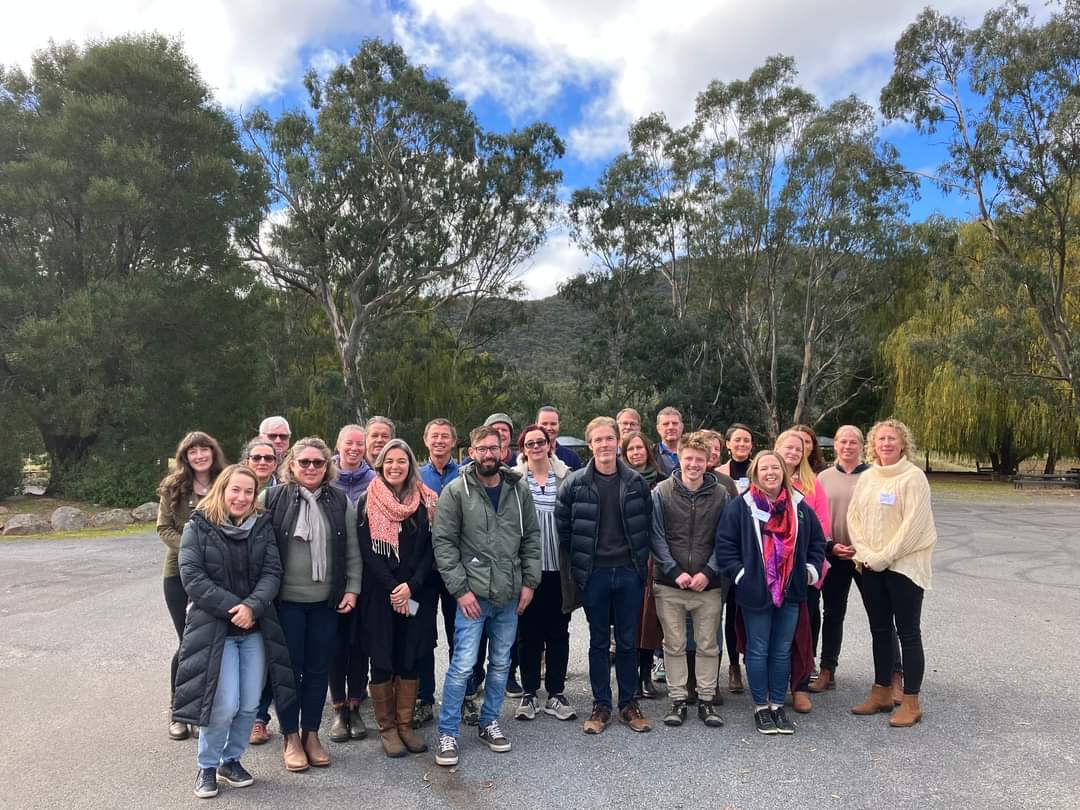
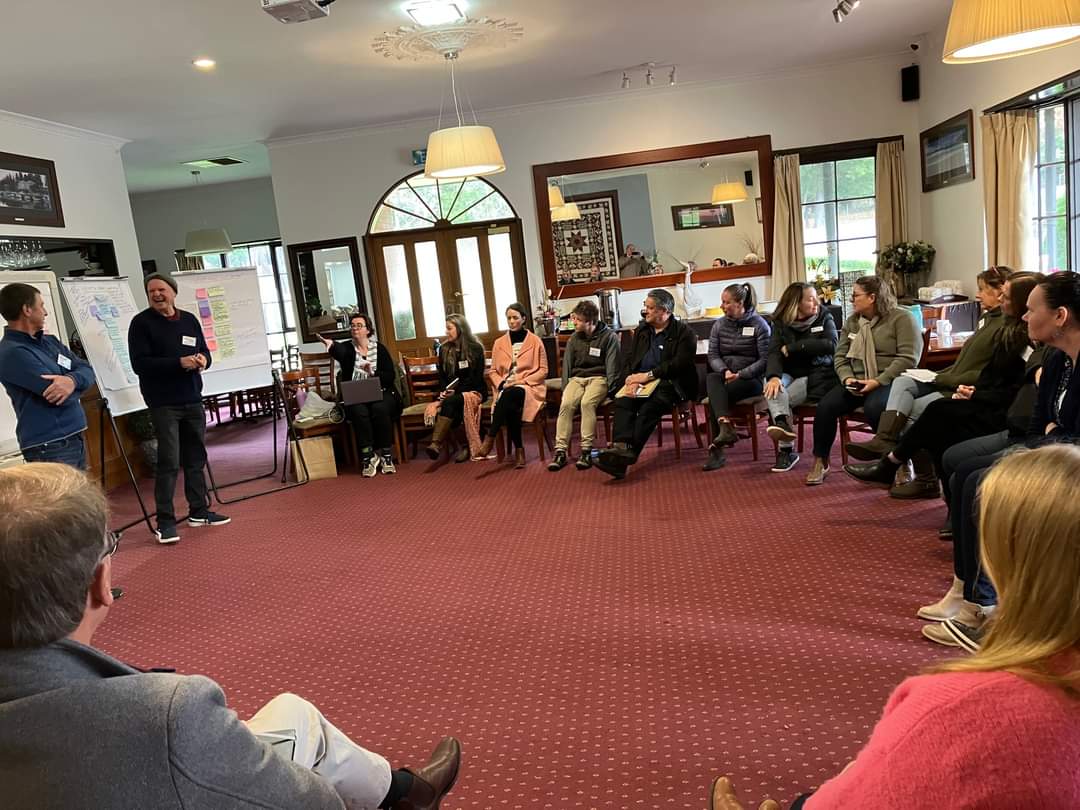
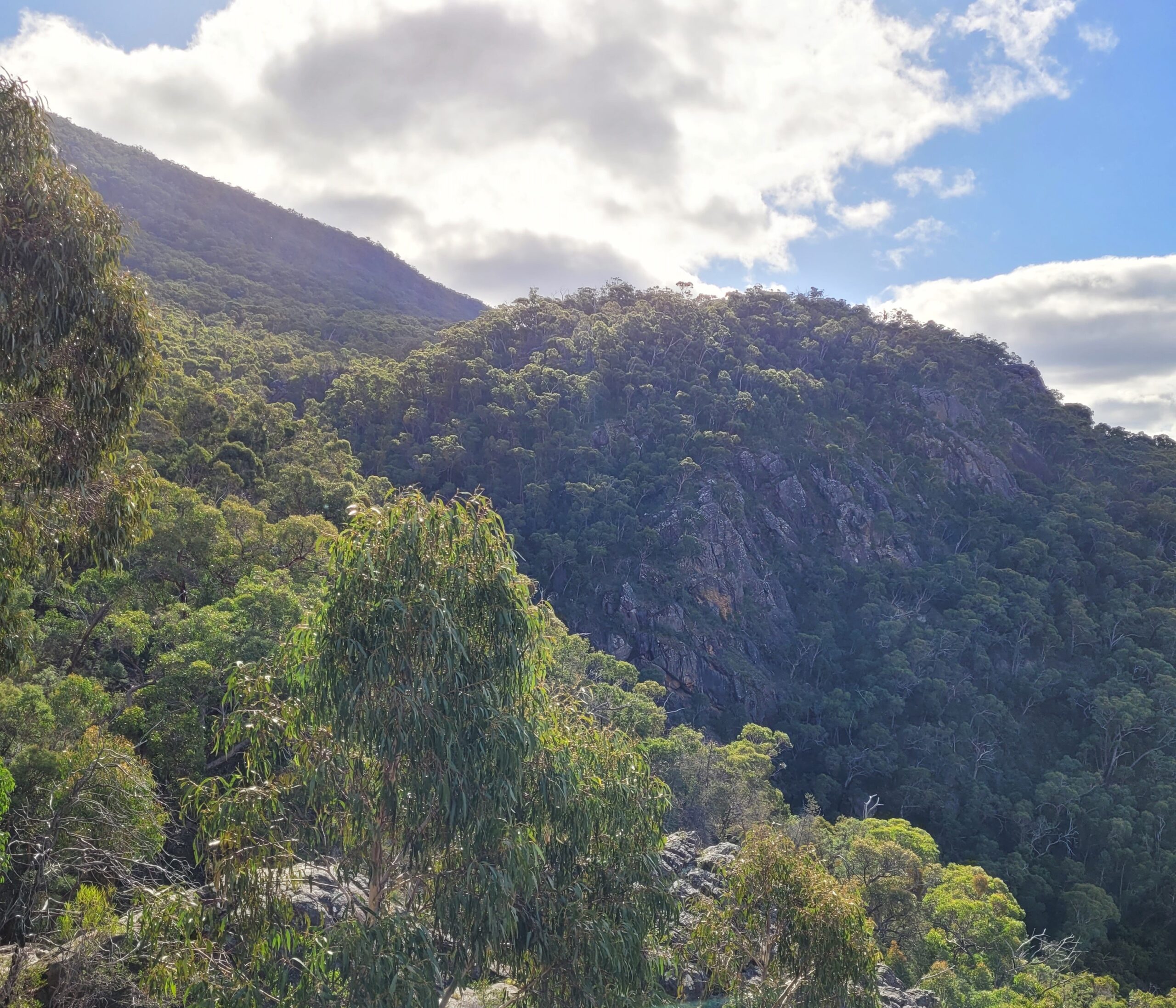
Tree planting on the farm
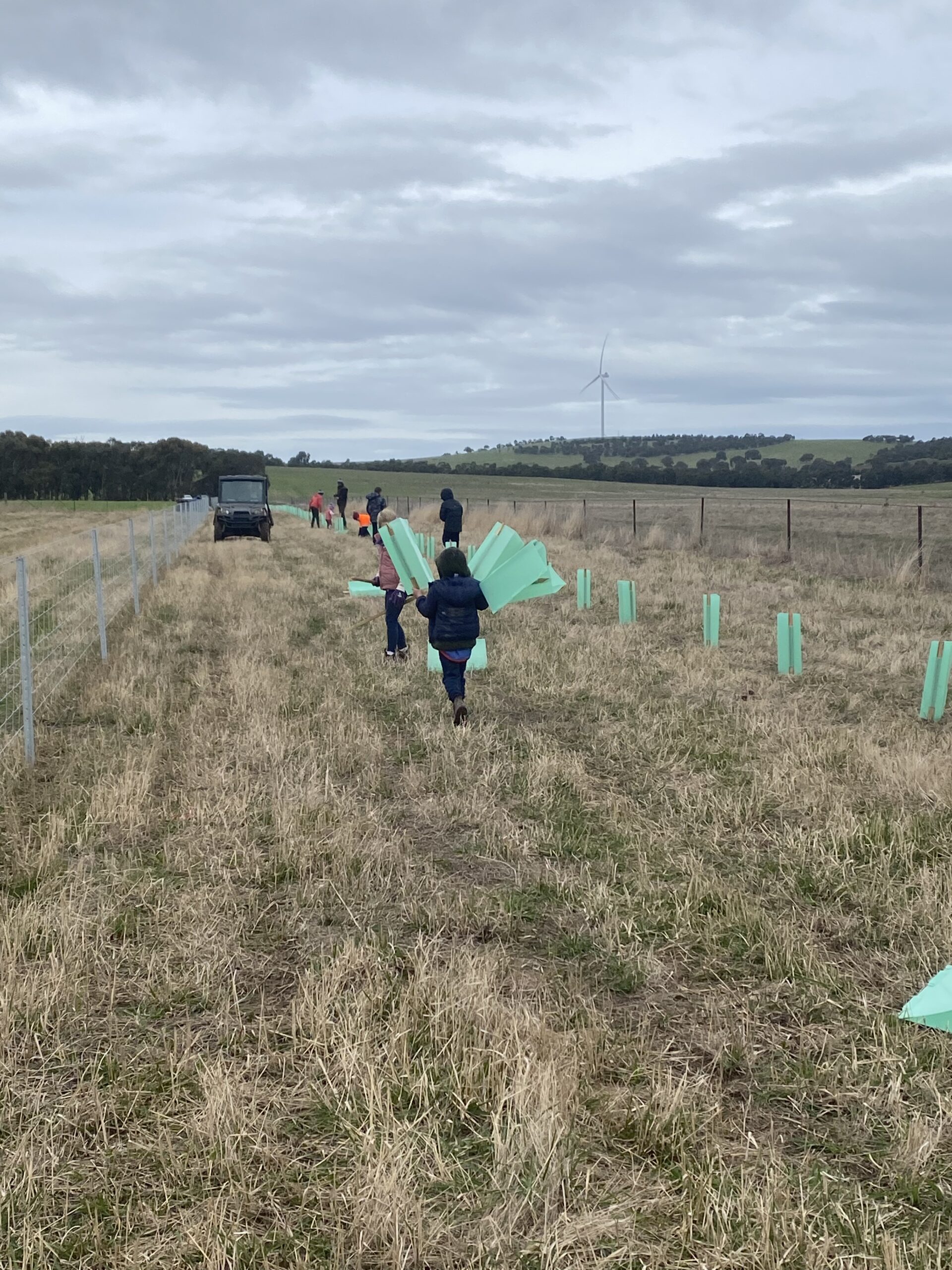
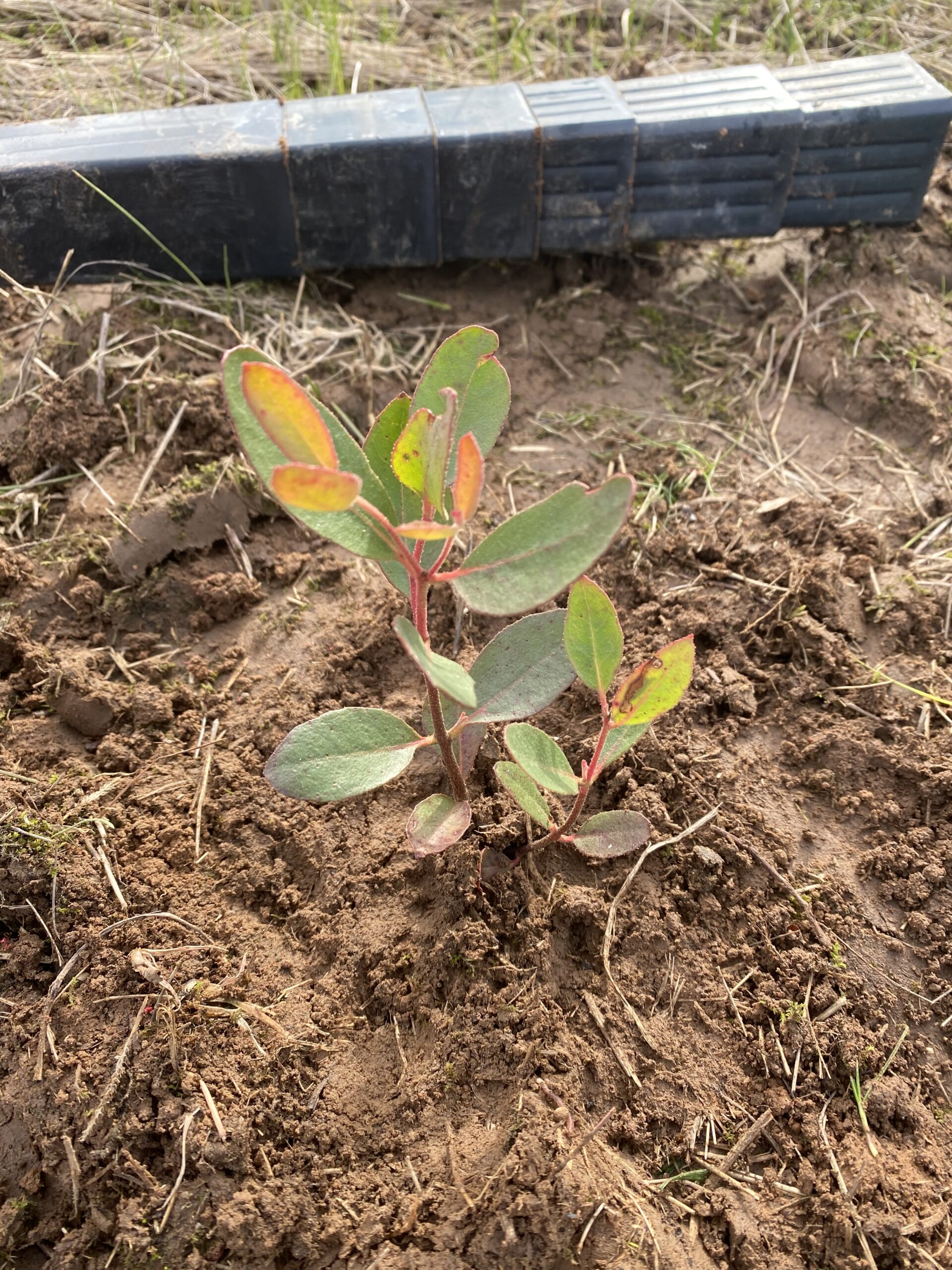
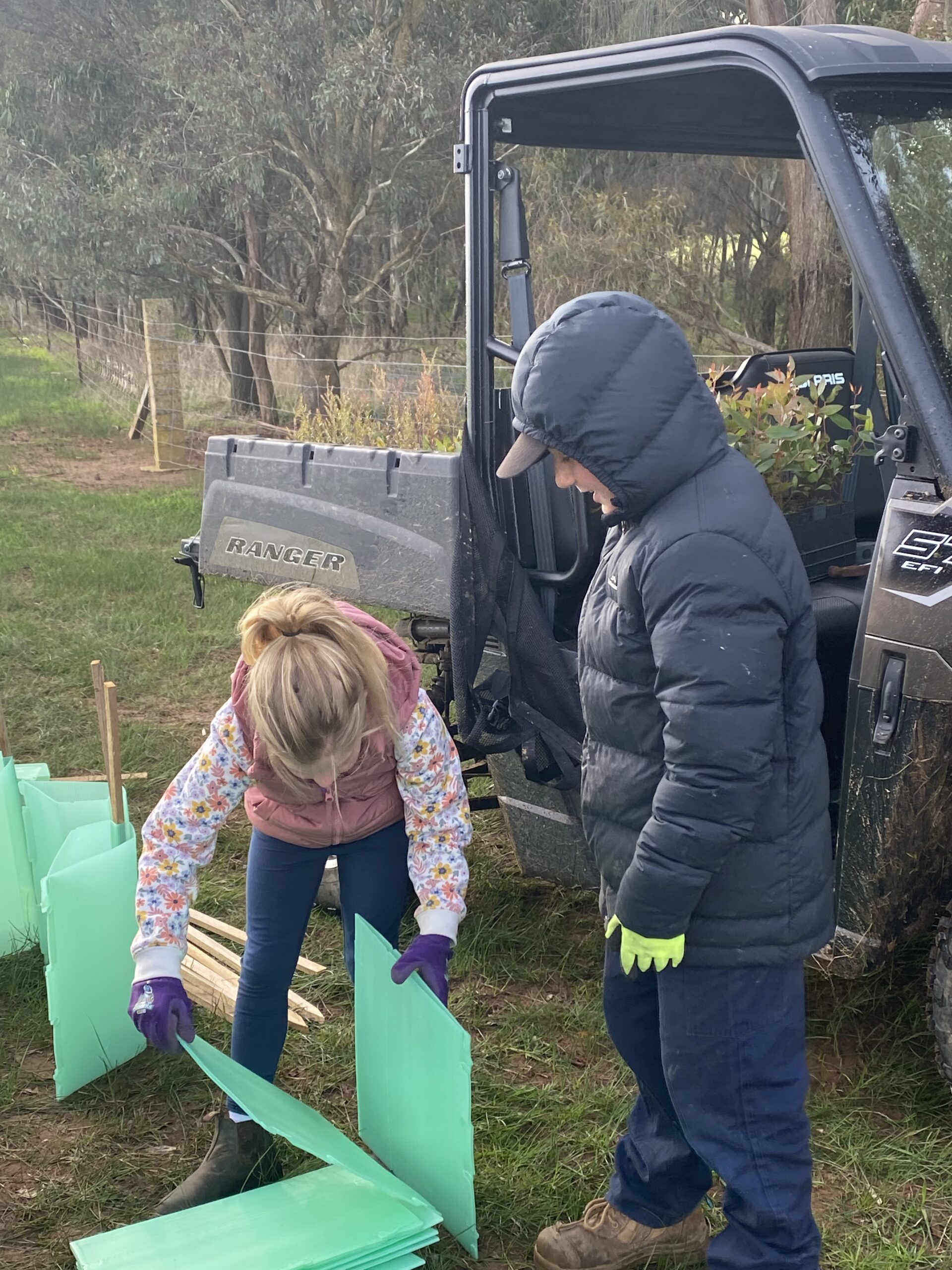
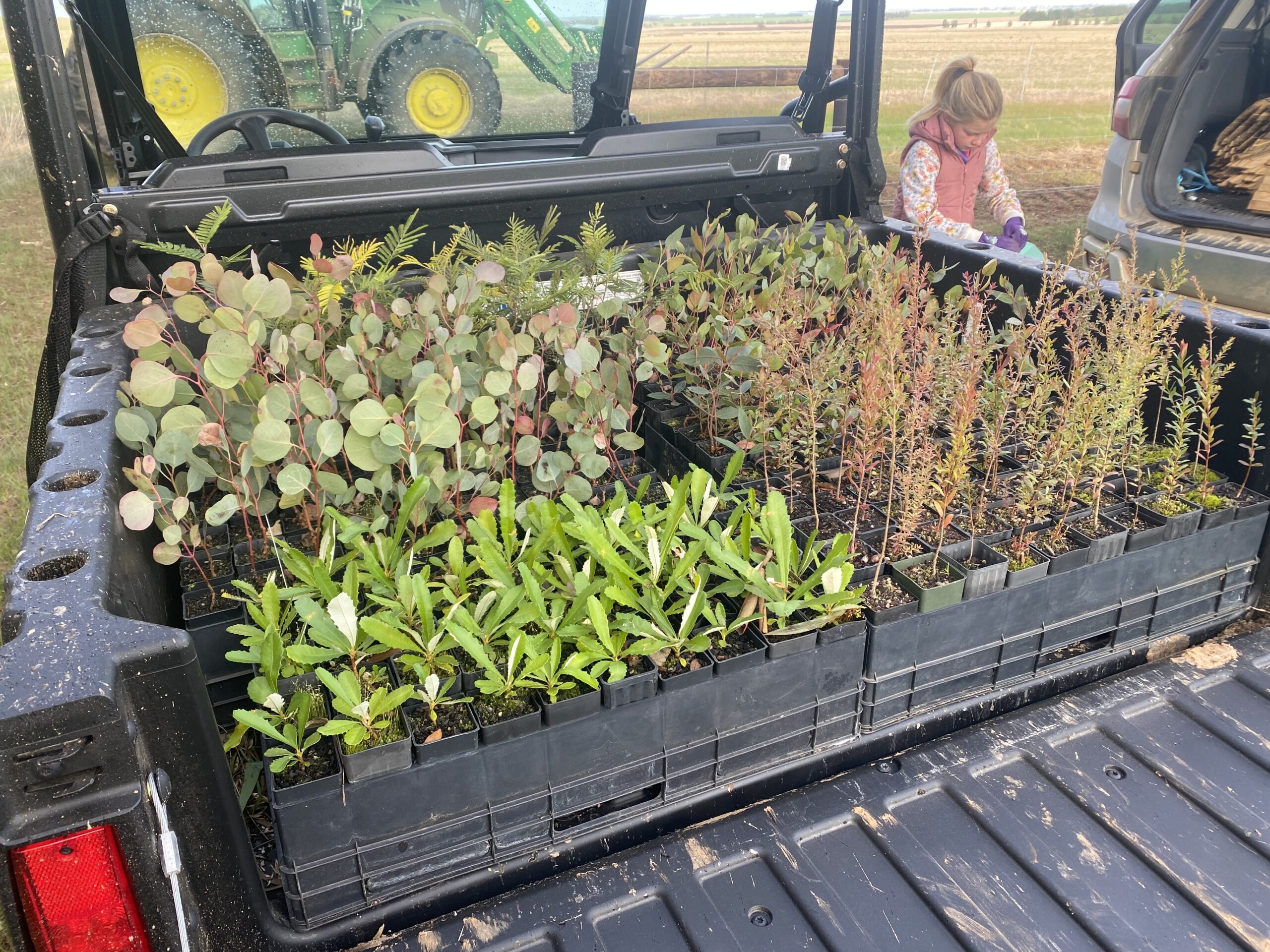
Raising Rarity: preventing extinction of Victoria’s threatened flora
Wendy Bedggood
The Royal Botanic Gardens of Victoria (RBGV) was successful in procuring a grant to fund this 3-year project. The project starts on 1st June this year and covers 24 threatened species across Victoria, 11 of them occur only in Western Victoria. RBGV are partnering with a number of organisations and there is a community engagement component to help with searching for and monitoring of these species. There will also be conservation genetics work done on collections already at RGBV as well as the collection of additional material to ensure the species diversity into the future. The gardens will also do work to optimise methods of germination on 11 species which are currently difficult to grow. For 10 species, little is known about how they are pollinated, so baseline data will be collected on pollination for these species, a researcher based at La Trobe university will lead this work. There will be ex-situ collections established as well as some reintroductions to establish new populations for some species.
If you are interested in participating in the searches which are happening this year on the western side of the state, please register with Dr Noushka Reiter at least a fortnight before the planned search. The best way to contact Noushka is by email at Noushka.Reiter@rbg.vic.gov.au
- 10th July in the South West, south of Lake Bolac, there will be a search for rosette leaves of Pterostylis basaltica.
- 2nd September on the southern border of the Little Desert in the Cooack area, there is a search for Spyridium furculentum.
- 17th September there will be a search in the Morrl Morrl area for Thelymitra mackibbinii with an option the following day to assist with monitoring in the Deep Lead area.
- 13th November in the Mt Rosea Track area to search for Sphaerolobium acanthos.
- 25th November in the Southern Grampians to search for Pimelea pagophila.
Example of some of the tree guards available

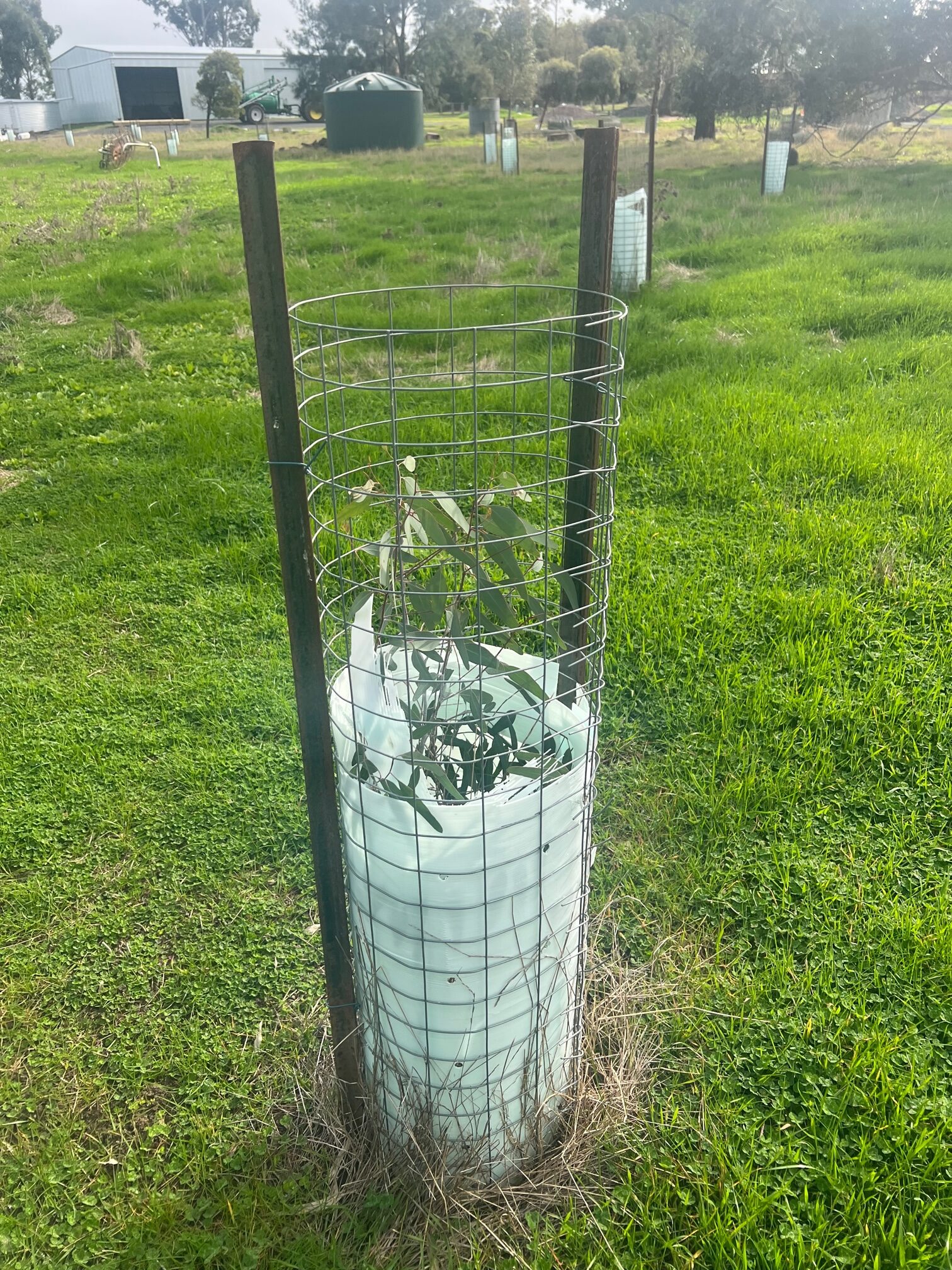
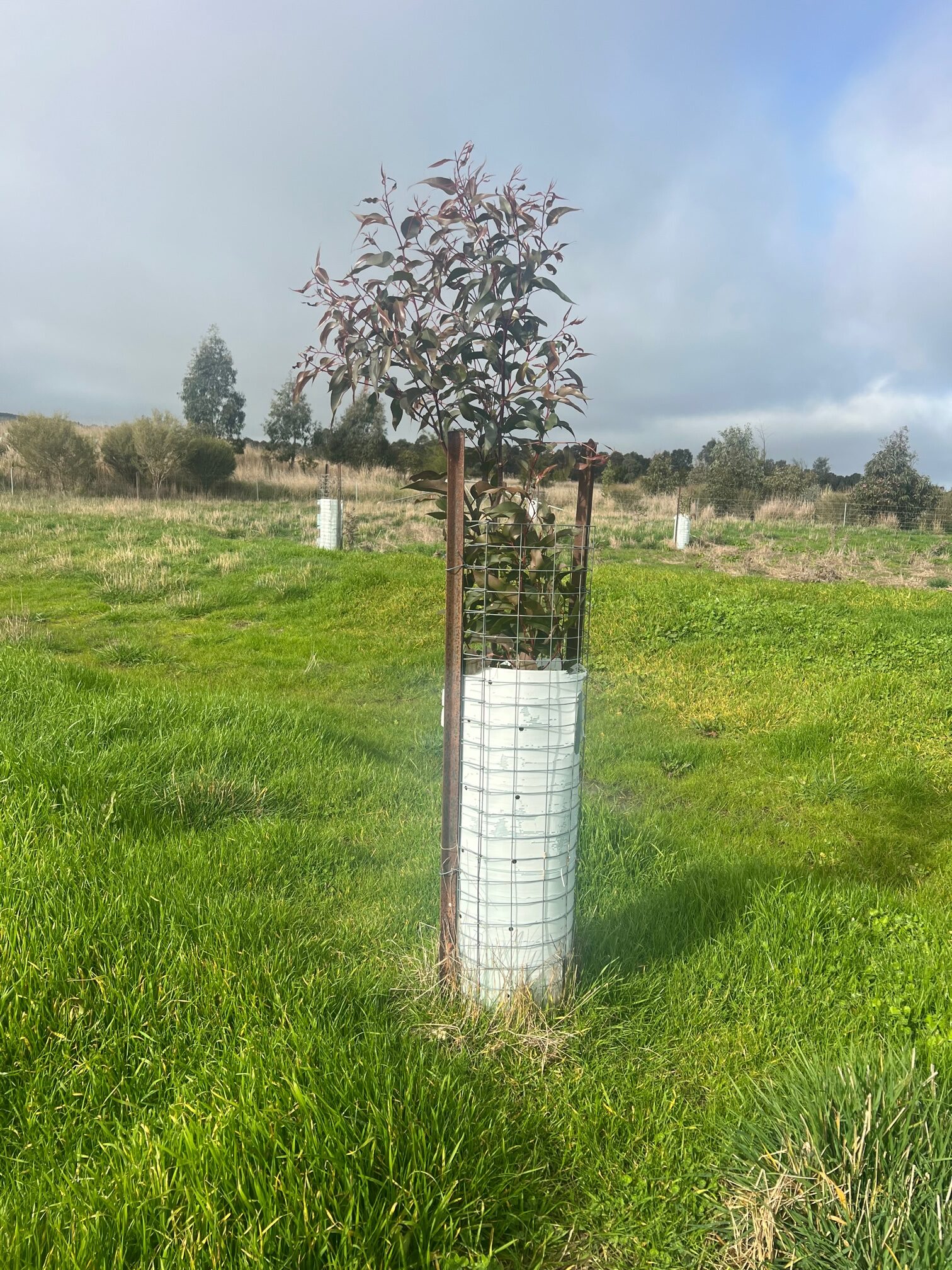
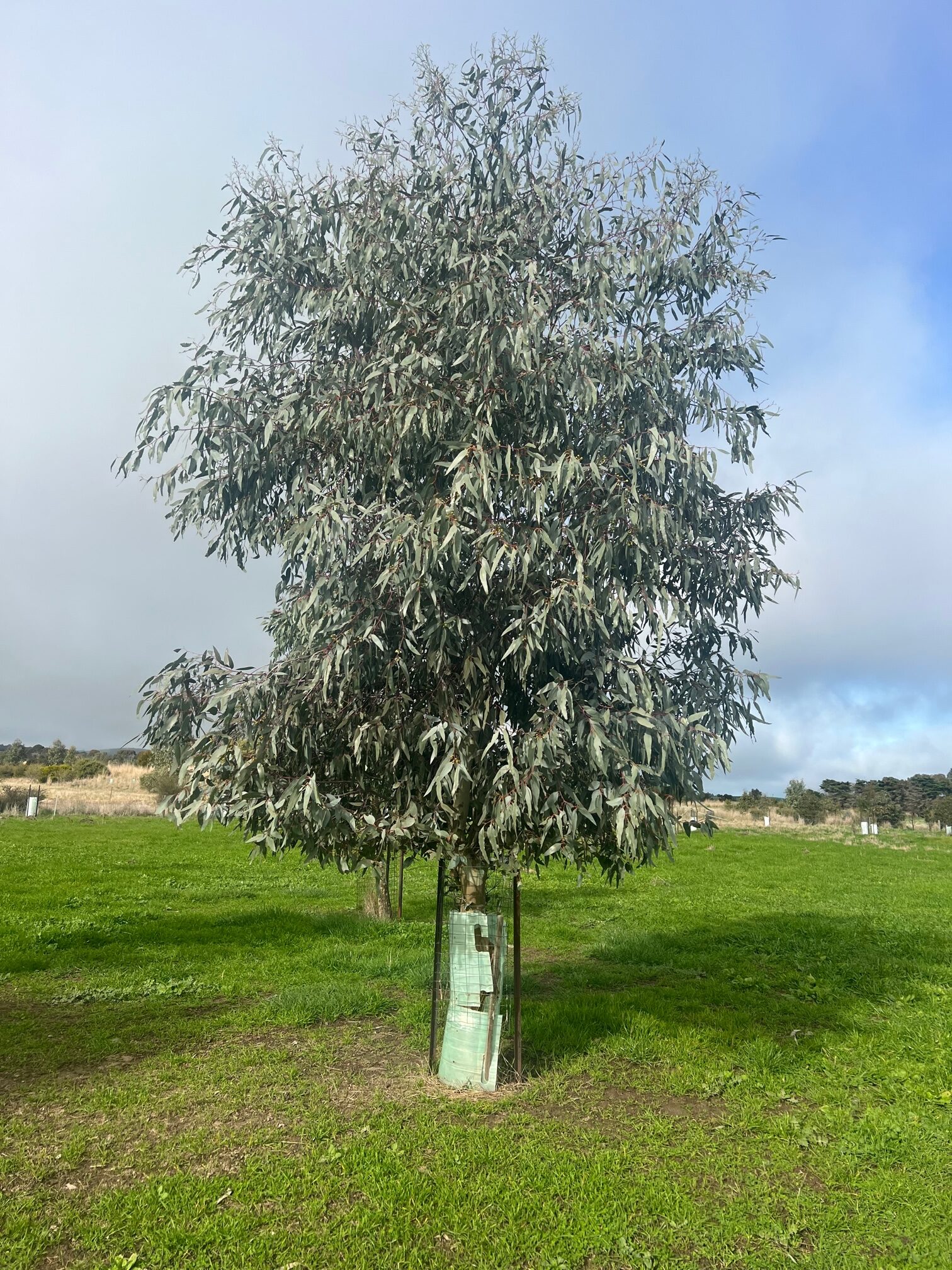
All photos supplied by Jack Tucker
Perennial Pasture Systems – Agtech Road Trip and Showcase Tour of Technology of Farm
Debbie Shea, Facilitator for Girls & Grass Advisory Group, Perennial Pasture Systems
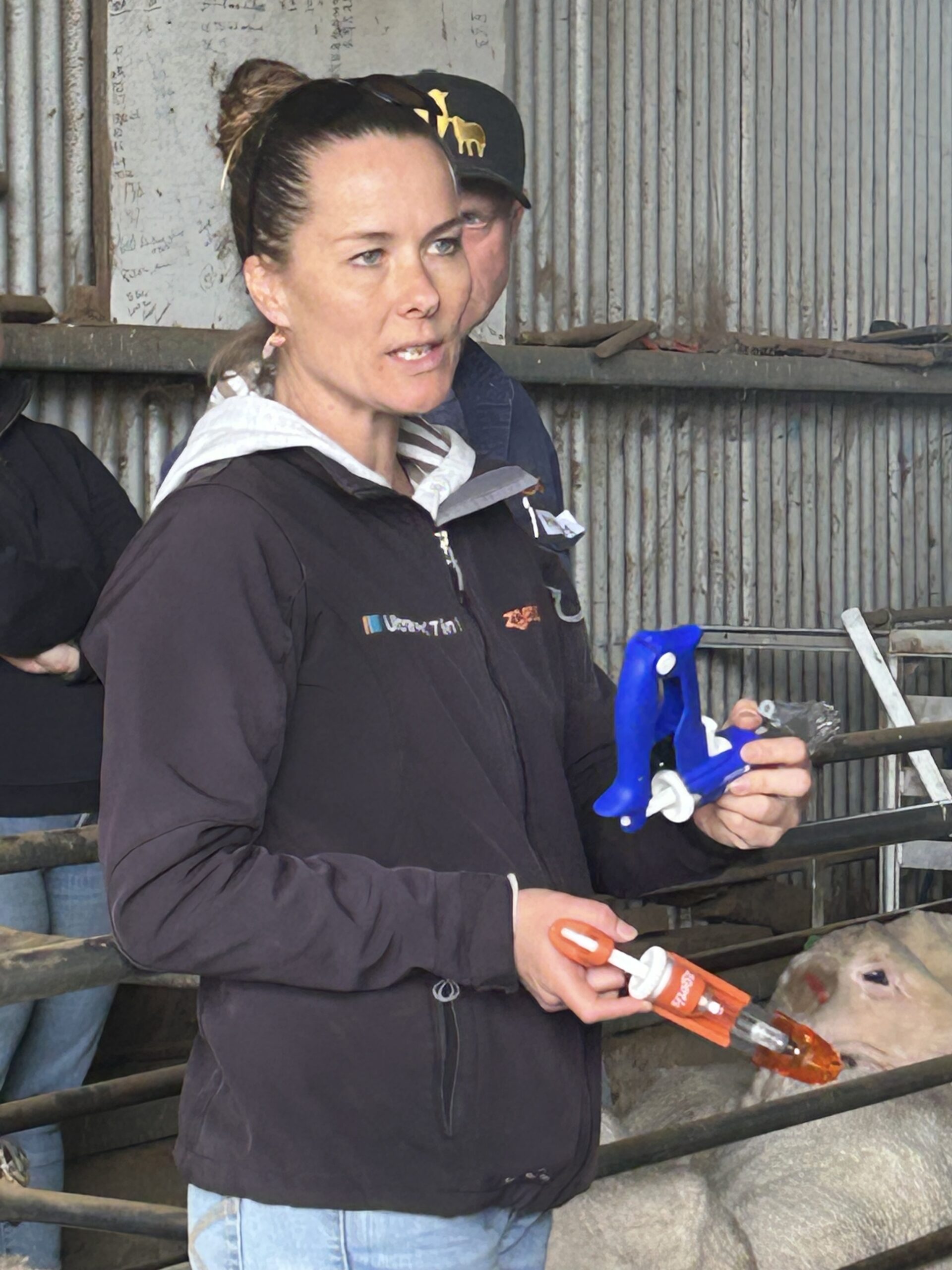
Zoetis, Heidi Sutherland, showing the vaccination applicators (photo supplied)
Perennial Pasture Systems (PPS) has received funding as part of AgriFutures Australia’s Producer Technology Uptake Program to design bespoke projects to increase technology adoption on farm. The PPS project will be in three parts:
- Part 1 – tour of a local lamb meat processing plant and a local farm, which has been completed.
- Part 2 – a workshop to identify individual goals and opportunities on-farm for improvement in efficiency/productivity through technology. This will take place on 31st May, 2023 in Ararat.
- Part 3- a three day tour into South Australia to visit the Struan Best Practice AgTech Demonstration Farm and some other leading farms in the district. This will take place from 4th – 6th June, 2023.
Part one of the PPS – AgTech road trip and showcase tour of technology on farm was recently completed. The group had twenty of its members undertake a tour of the Frew Foods International plant in Stawell. Owner Robert Frew explained the operation and how they have embraced technology on the floor and how they use the individual Electronic Identification tags on the animals to collect data on each carcass.
PPS members were given a great opportunity to see how what they do on-farm relates to the process through the plant. One big advantage for farmers is the feedback from the data collected including individual carcass weight, vaccination damage and animal health issues on individual animals. Farmers can then modify their management systems and or animal husbandry practices if necessary. “It was a real eye opener to see the robot technology in action, to learn about where the end product goes and just what we can do on farm to maximise the potential profit per animal”, was one comment made from a PPS member.
The group then moved to ‘Overdale’ at Concongella, this property is owned and managed by the Holden family. A further fifteen members joined the day activities where we all enjoyed a light lunch prior to presentations from Mal Nicholson and Sue Holden giving their enterprise background on genetics, what technology they use both in the office and in the sheep yards, what markets they target, what data they collect and how they use it and a little on sheep husbandry practices.
Kate McCue from Agriculture Victoria gave a short talk on biosecurity on farm how important it is now and will become even more so in the future.
Elke Hocking from ALM Tech, did a great job of bringing it all together- in what technology we saw in operation at the Stawell plant and how that relates to the on-farm operations. She covered topics including, how to get lambs to hit the market specifications, benchmarking your ram team, RamSelect, where to set your targets, data and what to do with it, growth rates, carcass data, genetic data and animal health considerations for example carcass trimming due to incorrect methods of vaccinating animals.
Zoetis representative Heidi Sutherland then took participants through an animal health session. Heidi showed via a power point presentation the importance of the right size needles and the correct vaccination applicators to assist in implementing the correct technique for injecting sheep. It is farmers duty of care towards their animals to follow best practice science and vaccination methods to prevent illness in animals. The group moved into the undercover sheep yards to experience hands on the applicators and practice vaccination technique. No animals were vaccinated on the day, Heidi demonstrated how to hold the animal correctly to minimize stress and to protect yourself from accidentally injuring yourself.
For more information on Perennial Pasture Systems and events you can refer to the Website: https://www.perennialpasturesystems.com.au/
or Facebook: https://www.facebook.com/groups/1750963505149672
or contact Project Manager, Rob Shea, via mbl: 0438 521357 or email: yadin061@tpg.com.au
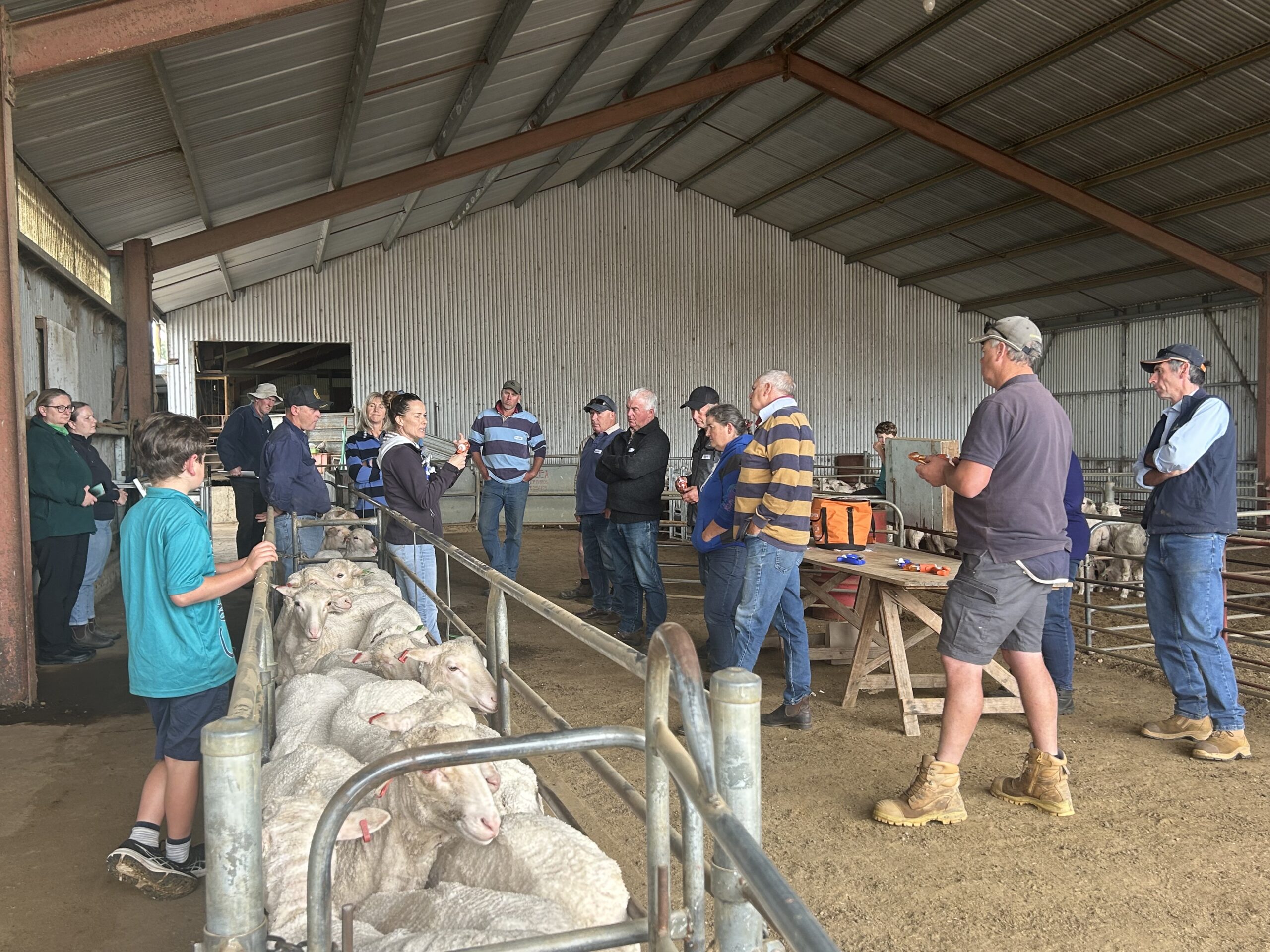
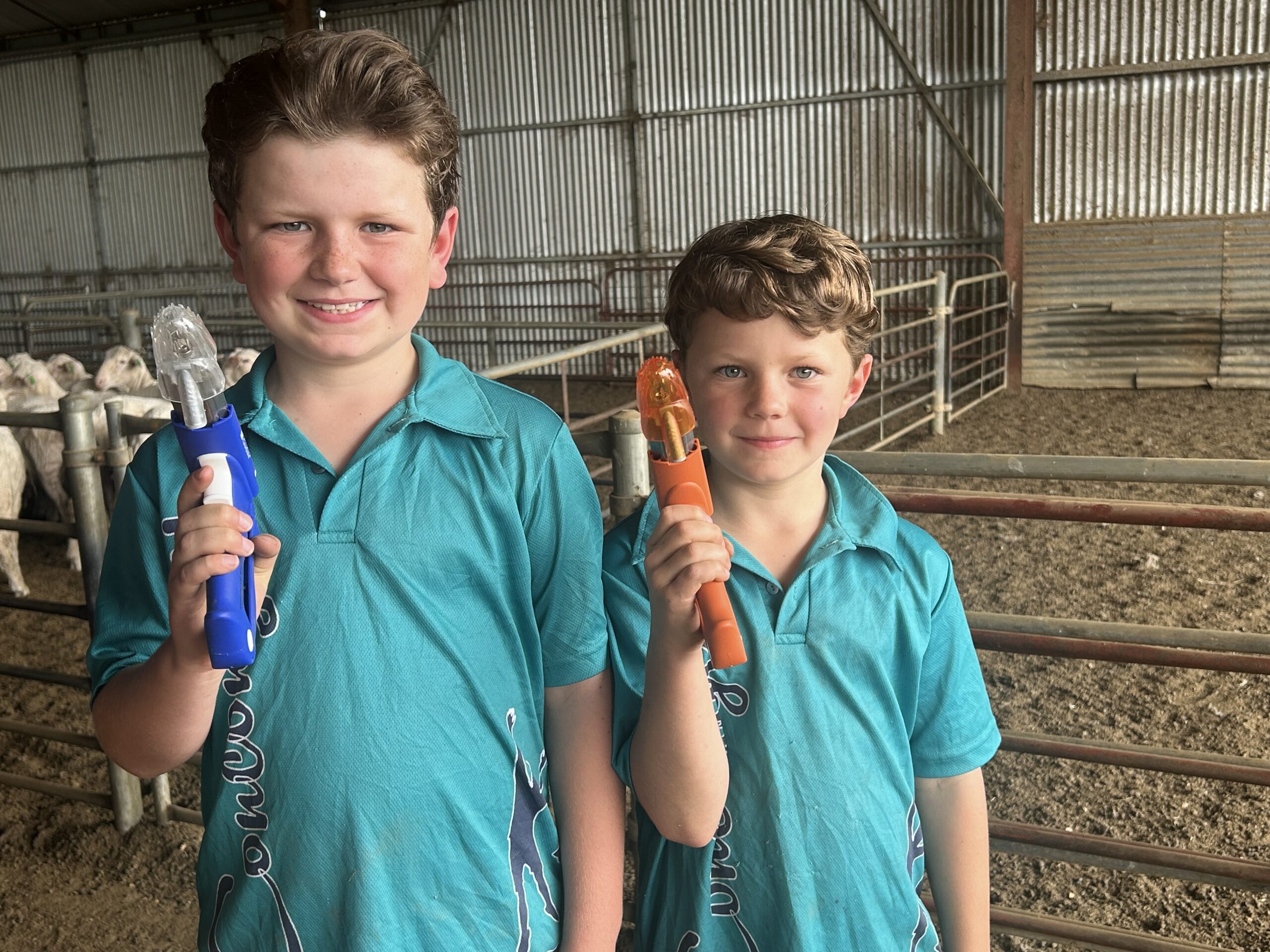

Festival theme announced!
The theme for the next Eel Festival on 22-23 March 2024 is ‘Song, Story, Dance; Ceremony and Celebration’.
It was chosen by the committee’s Cultural Advisory Committee and underscores the importance and continuation of culture in all its forms for First Nations people of the area.
The committee is now designing the next festival program to reflect the theme.

Reconciliation and NAIDOC Week art exhibition
The opening of the exhibition to celebrate Reconciliation and NAIDOC Week was held on 2 June at the Lake Bolac Information and Business Centre.
The exhibition was opened by Ararat Rural City mayor, Jo Armstrong, and Gunditjmara elder Adeline Thomas gave a heartfelt Welcome to Country.
It included paintings, prints, wood-carvings, clothing and emu-feather necklaces, and featured works by Kirrae Whurrung artist Brett Clarke.
Brett’s works explore the rich cultural history of his people of south west Victoria. He spoke about his early life and how his grandfather and his mother, artist and musician Patricia Clarke, influenced his work.
Brett has been involved with the Eel Festival since its inception, taking part in many of the Healing Walks, performing on the lakeside stage and running a variety of cultural workshops.
His mother’s painting, ‘The Healing Walk’, was created for the first Eel Festival in 2005, and was a prominent part of the exhibition. Brett, who writes and performs music as ‘Boorook’, led the audience in his own beautiful song in Gunditjmara language.
Lake Bolac College junior school students contributed colourful paintings of emus and honey ant dreaming and Lake Bolac Kindergarten children created beautiful yarning sticks.
The exhibition opening, which was enjoyed by an enthusiastic group of local and visiting art lovers, was supported by funding from Reconciliation Victoria.
There is still time for you to attend. The exhibition of affordable artworks closes on 9 July.



WESI Project new WeedScan App
The WESI (Weeds at the Early Stage of Invasion) team was back on the road again in March. This time our travels took us to the north east of Victoria to deliver weed ID training at the DEECA Benalla office.
The WESI weed ID training (on Wednesday 22 March 2023) was delivered to 30 participants from DEECA, Parks Victoria, Landcare, North East Catchment Management Authority, Gecko CLaN Landcare and others. WESI takes great joy in getting out to different Country and meeting the various people dealing with weeds across the State. Whilst we are there to deliver training, we learn so much visiting a region and listening to participant’s stories.
WeedScan App and website training
The WESI training held in Benalla was a collaboration with DEECA’s WESI and Agriculture Victoria, and NSW DPI . A component of the training was an introduction to the new (soon to be released) WeedScan app and website.
WeedScan is an artificial intelligence-based tool for identifying, recording, and managing priority weeds across Australia. WeedScan contains 83 priority weeds species (more species to be added soon) and was available to participants to try out at the Benalla training sessions.
The 2-hour workshop provided training on how to use WeedScan and included a practical hands-on application of WeedScan using photos and live samples of priority weeds, some of which included the WESI weed display and State Prohibited Weeds from Agriculture Victoria. The public invited to participate included weed and biosecurity officers, individuals involved in ‘boots on the ground’ weed management, Landcare members, weed spotters and others interested in weeds.
The WeedScan project was developed by the Centre for Invasive Species Solutions, CSIRO, and NSW DPI with input from other states and territories, including Victoria. Funding for WeedScan was provided by the Commonwealth of Australia through the National Landcare Program’s Smart Farming Partnerships.
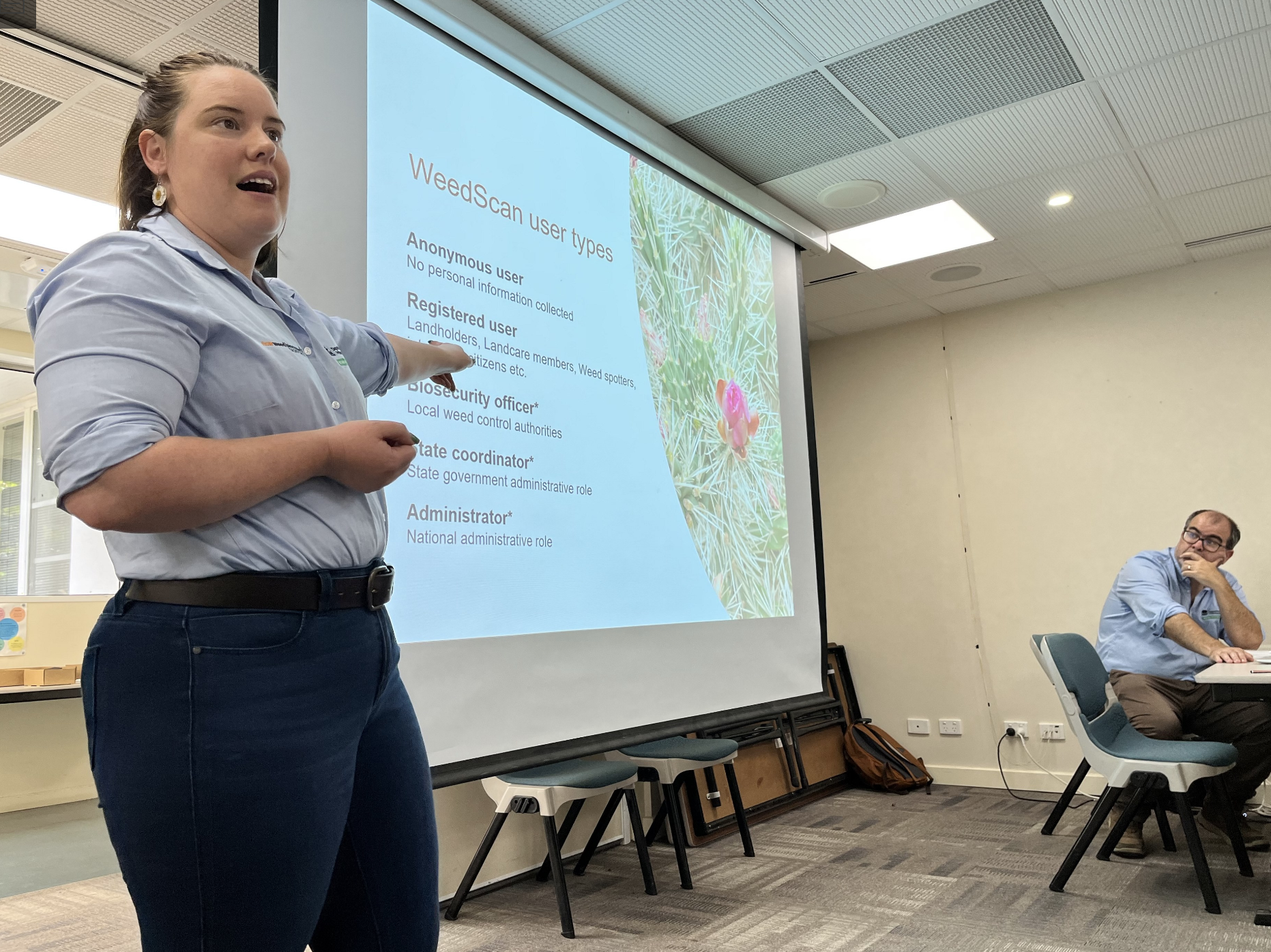
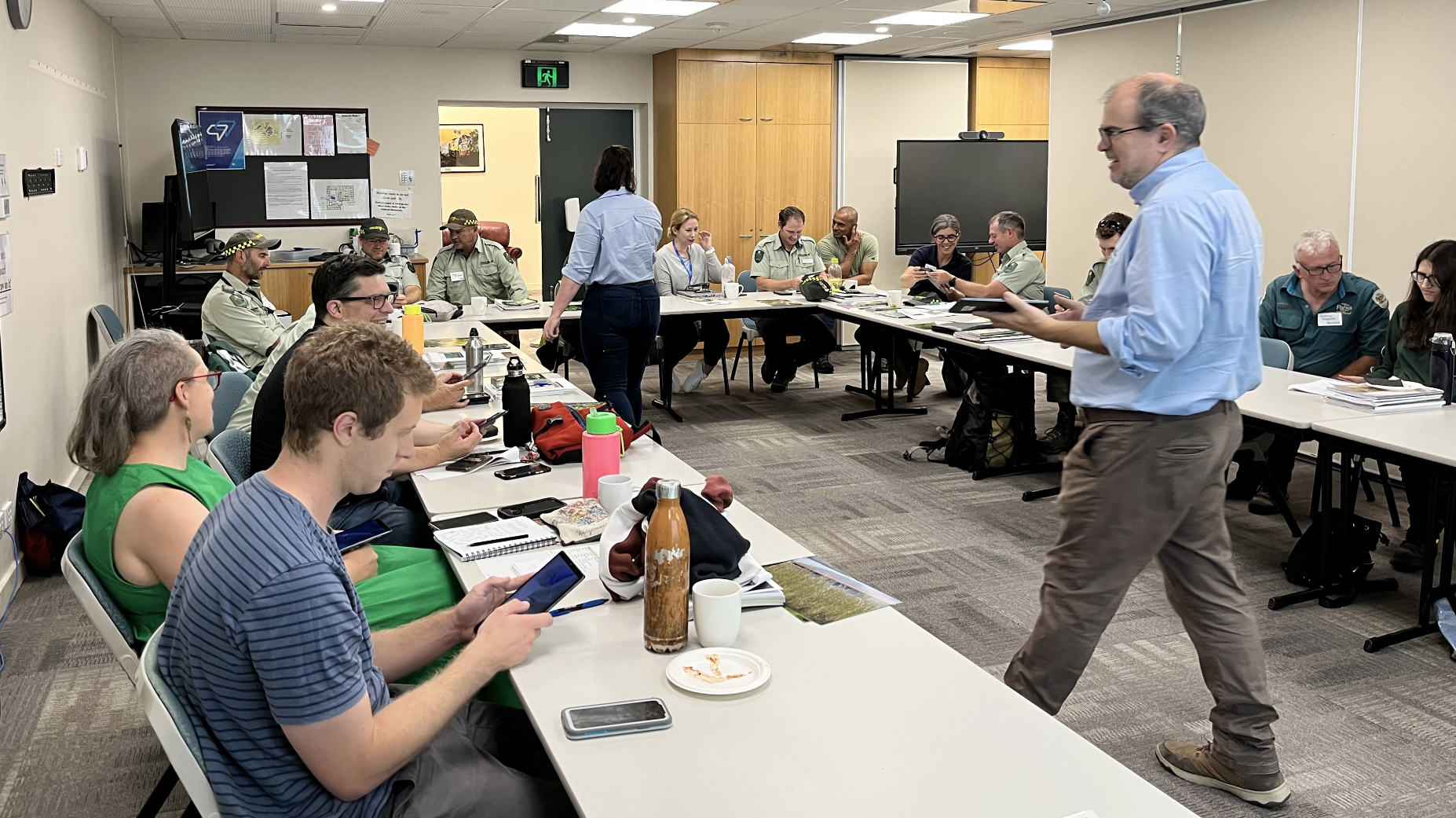
Understanding chemical impact on beneficial insects in grain paddocks
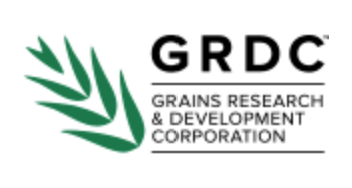
Grains Research & Development Corporation
Insecticides are a valuable tool for Australian grain growers to effectively manage pests in grain production. However beneficial insects also play an important role in farming and now understanding how and what chemistries to use to protect these ‘paddock helpers’ is easier than ever.
Healthy populations of beneficial insect can suppress pests and despite grain growers being keen to preserve these natural helpers, integrated pest management programs have been challenging, because there was no integrated, scientifically proven guide explaining the impact commonly used insecticides have on beneficials.
Now as part of the Australian Grains Pest Innovation Program (AGPIP), an investment by the Grains Research and Development Corporation (GRDC) in partnership with Cesar Australia and the University of Melbourne there is a guide for growers, agronomists and farm advisers in the Beneficials Chemical Toxicity Table.
Developed in consultation with grain growers and chemical industry representatives, the table summarises the impacts of various insecticidal and miticidal active ingredients on a range of beneficial insects, such as ladybird beetles, parasitoid wasps, predatory mites, lacewings and hoverflies.
The research focused on chemicals, field rates, growing environments, pests and beneficials specific to the grains industry, and this was the first time that such a guide had been developed for Australian broadacre cropping.
Since its initial publication in April 2022, this guide has been instrumental in helping growers make informed management decisions.
South Australian agronomist Hamish Verco said the toxicity guide had become a valuable reference tool in the field.
“I work in the organic/biological space, so my recommendations are often to avoid insecticides all together, but this is not always possible,” Mr Verco said.
“So, where growers must, it is great to empower them with knowledge on what products they can use that may have less effects on beneficials.”
The data collected on beneficial insects covers a wide range of species, which are presented in a consolidated grouped form in the table. For example, recent findings on snout mites, which are important predators of the red-legged earth mite and lucerne flea, are now incorporated into the ‘predatory mites’ category.
Overall toxicity ratings for each chemical have been determined by averaging the results across all insect species included. Chemicals are arranged in ascending order of overall toxicity – the least toxic chemicals begin at the top of the table and progress downward toward the more toxic chemicals.
By utilising the Beneficials Chemical Toxicity Table, growers can make targeted spray decisions that minimise harm to essential beneficial insects and maximise biological control against a specific pest.
For instance, if a grower struggling with aphids has observed the presence of parasitoid wasps in their fields, they can opt for an insecticide that exhibits low toxicity towards the parasitoids.
Even if a grower doesn’t know which beneficials are present in their fields, the table can still be used to identify which pesticides have the lowest overall toxicity across all beneficial species, with a focus on hardy generalist predators such as rove beetles.
By using the table found under ‘Resources’ on the Cesar Australia website, growers can adopt a more targeted and environmentally friendly approach to pest management, which can aid in supporting beneficial insects.
This research is being undertaken as part of the Australian Grains Pest Innovation Program (AGPIP). AGPIP is a collaboration between the Pest and Environmental Adaptation Research Group at the University of Melbourne and Cesar Australia. The program is a co-investment by the Grains Research and Development Corporation (GRDC) and the University of Melbourne, together with in-kind contributions from all program partners.
About Us: GRDC is one of 15 Rural Research and Development Corporations (RDCs) responsible for planning, investing in and overseeing research, development and extension for 25 leviable grain crops. Our purpose is to invest in RD&E to create enduring profitability for Australian grain growers.
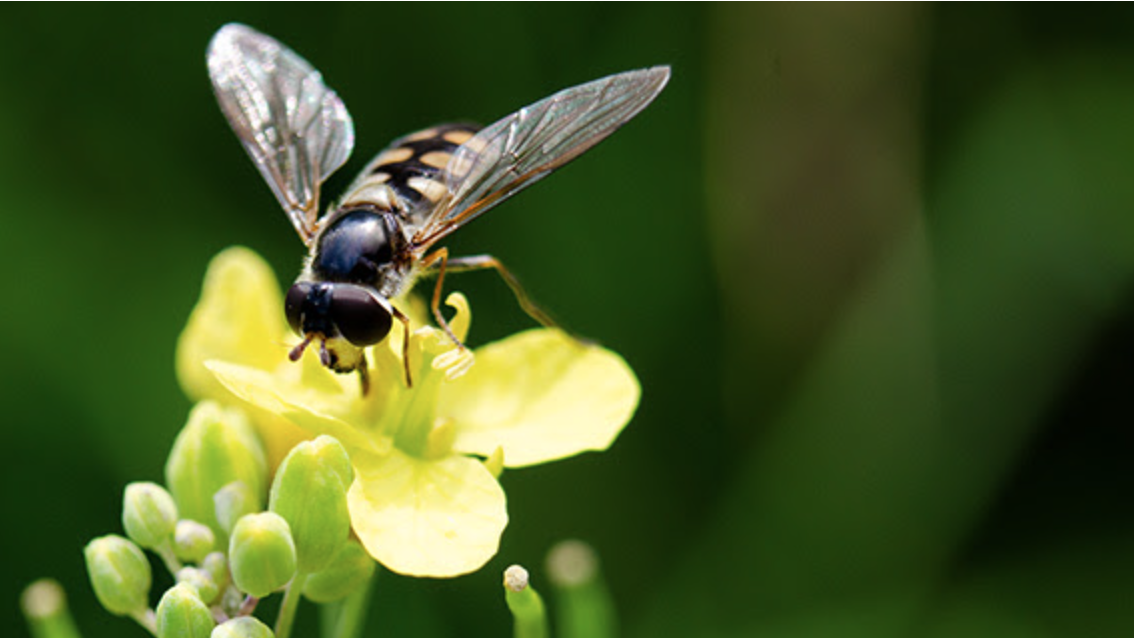
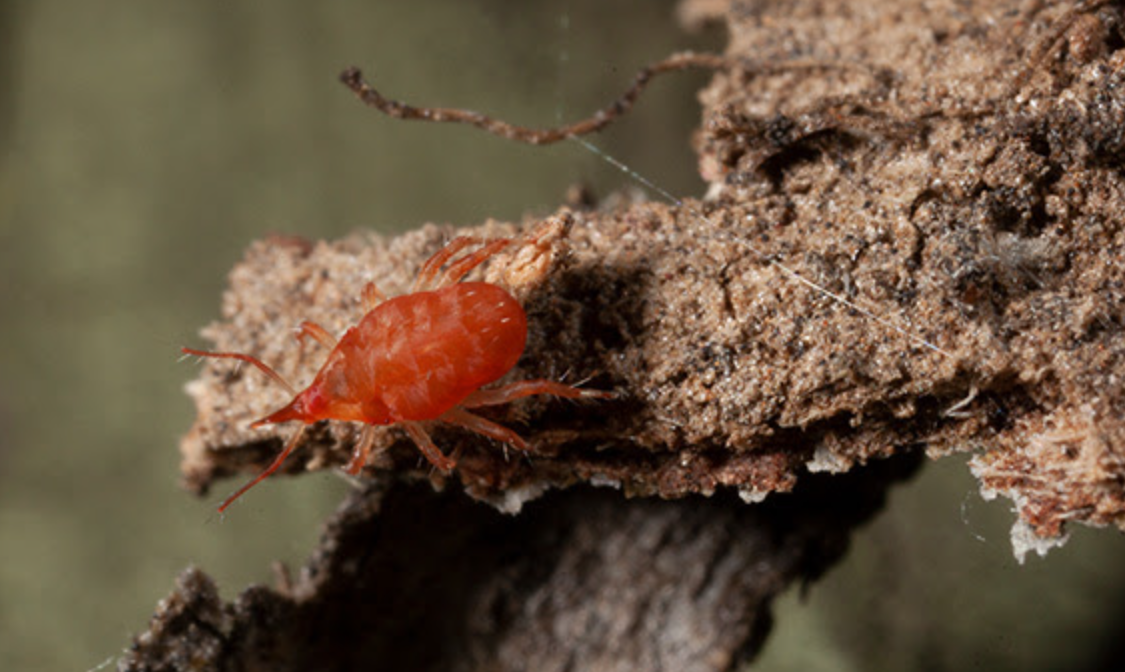
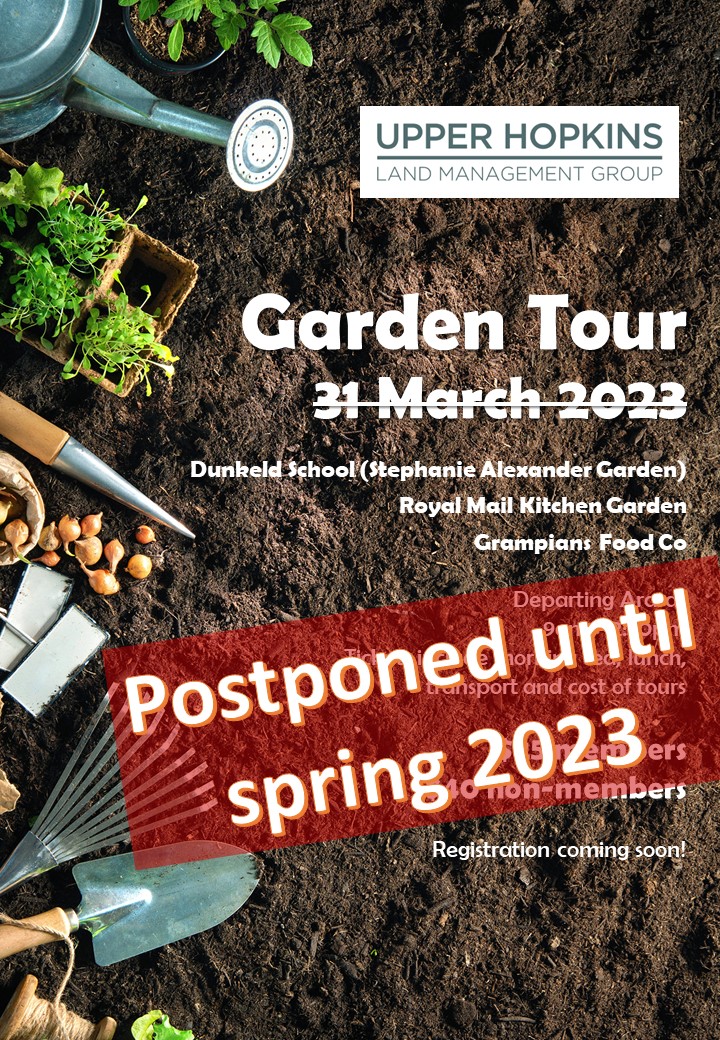
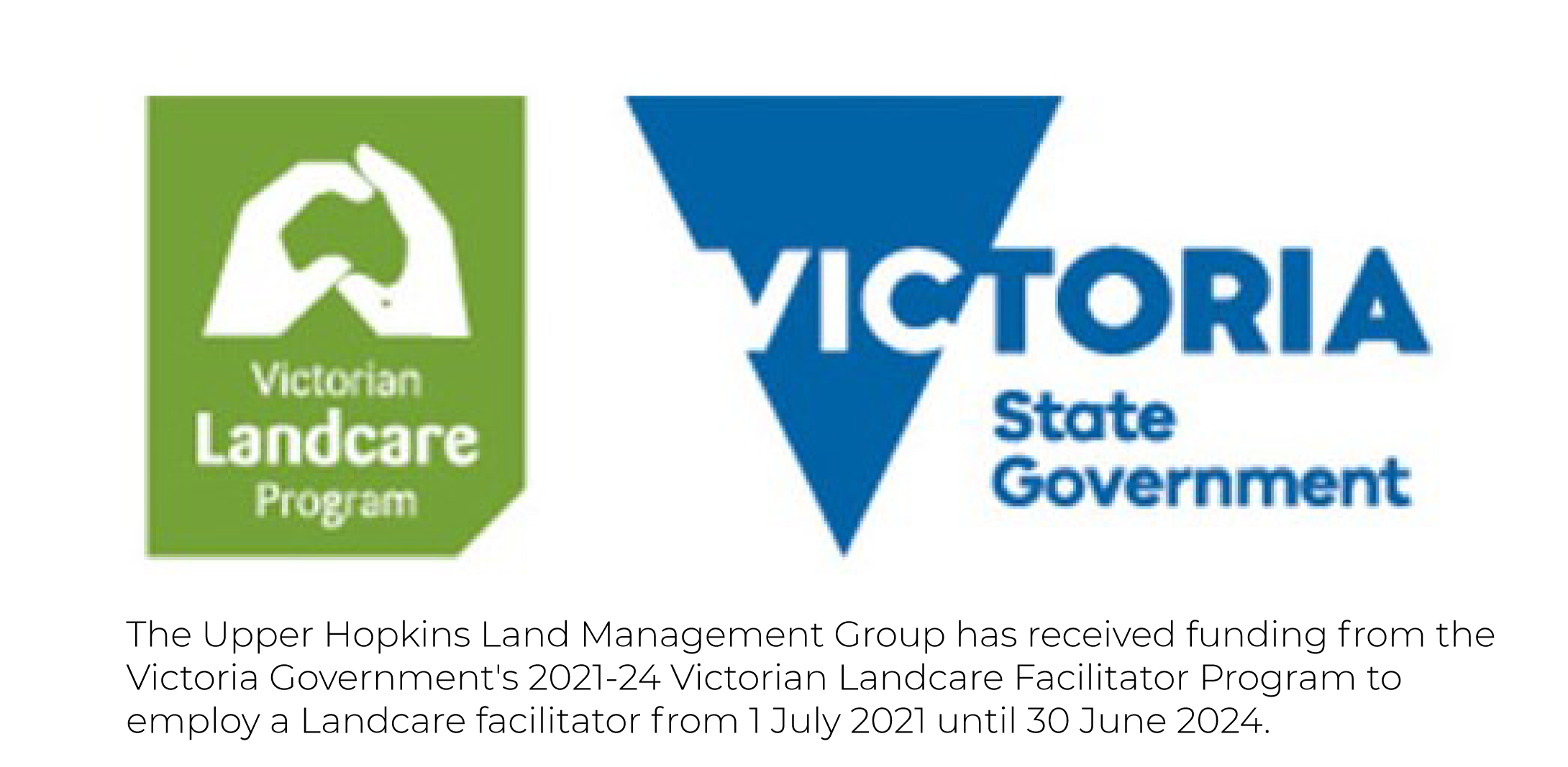

Meanderings and Reflections
It was great to get out and explore the region along the back roads! The rivers and creeks are brimming with water, and I was lucky enough to encounter a platypus in Fiery Creek and a couple of rakali in the Hopkins River, as well as numerous birds on my journey.
Thank you to everyone who has welcomed into my role as Landcare facilitator, I am slowly meeting members of Landcare, collaborators and the greater community during my travels. I am very excited to be on board and be contributing to the amazing projects and initiatives in the region.
I have colour coded the EC results for livestock water supplies. Values in red are EC levels exceeding those at which livestock production begins to decline, yellow is safe for livestock except for pigs and poultry, and green levels are safe.
Happy Landcaring!
Nick
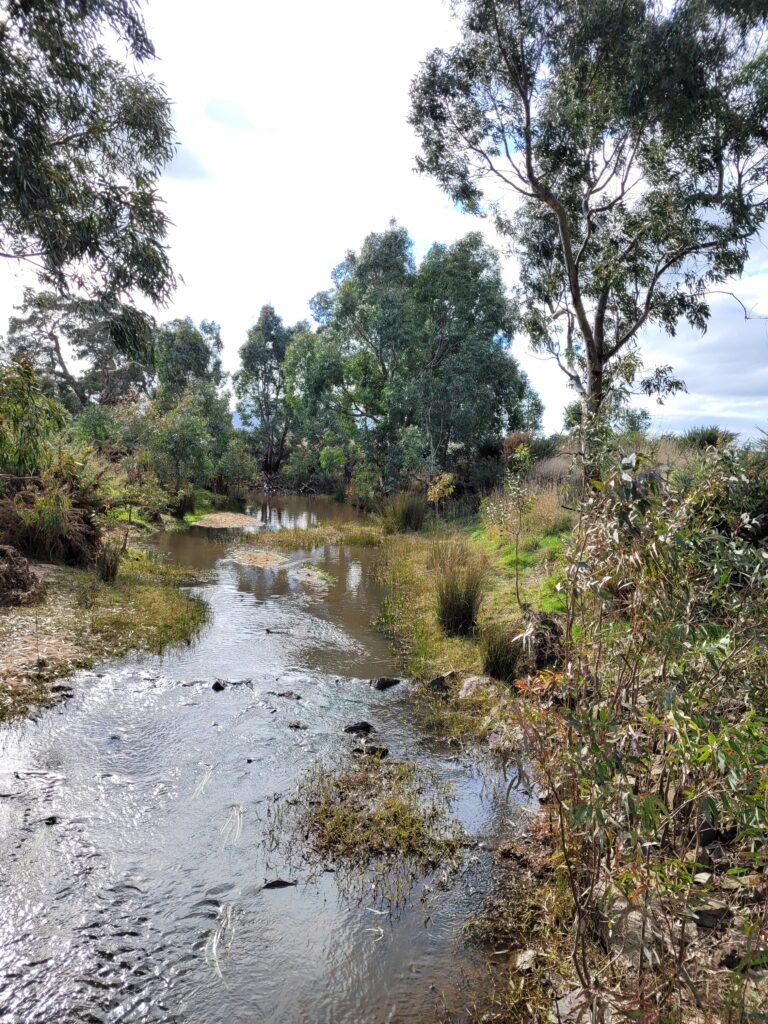
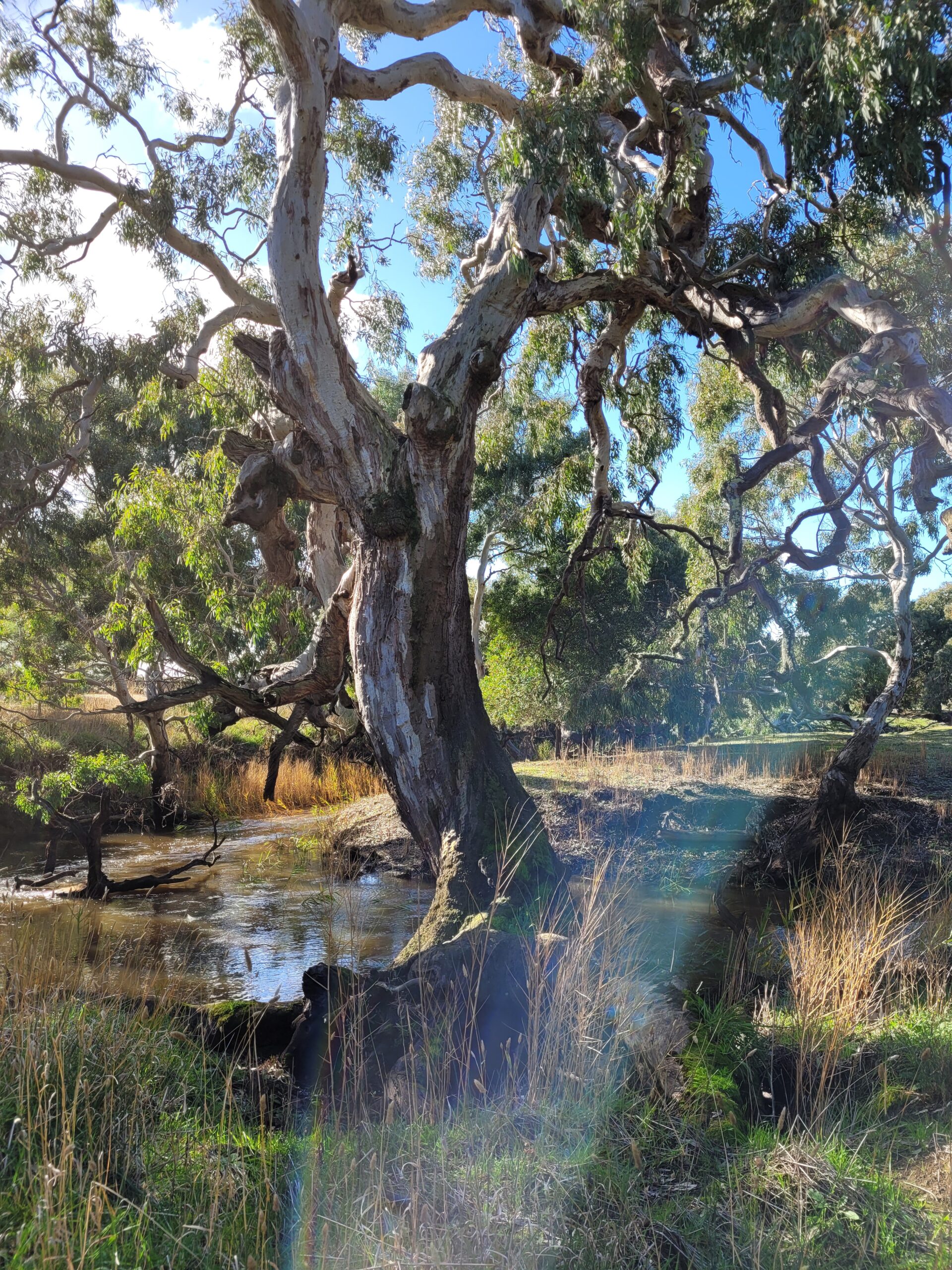
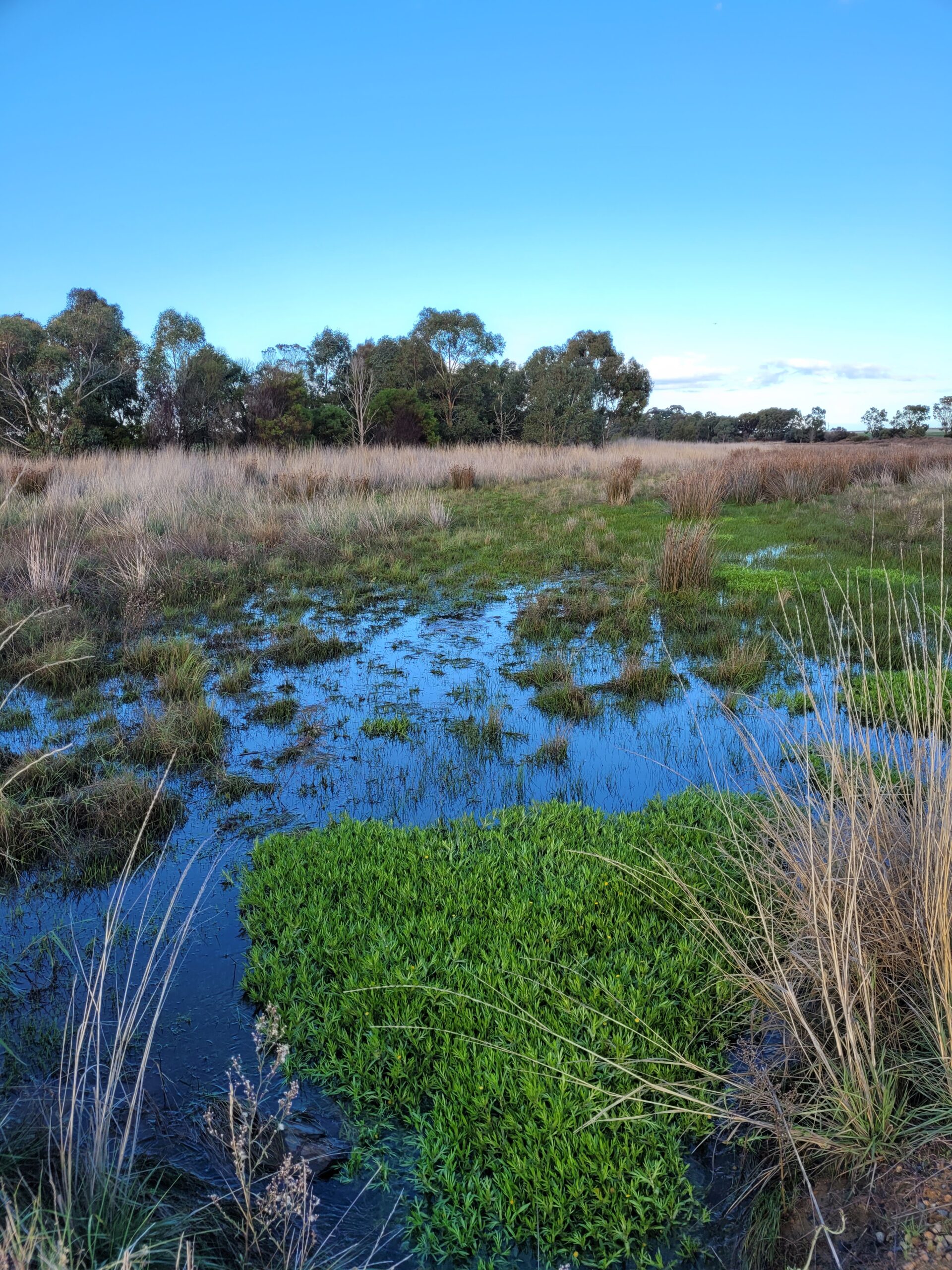
Water levels are relatively high, and creeks and rivers are flowing rapidly at the moment. Due to the amount of water, EC levels are dropping.
Fiery Creek Sites
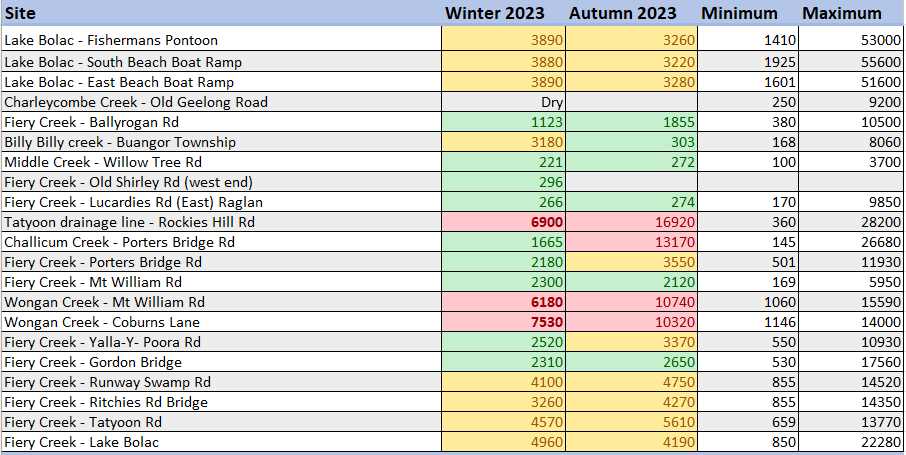
Hopkins River Sites
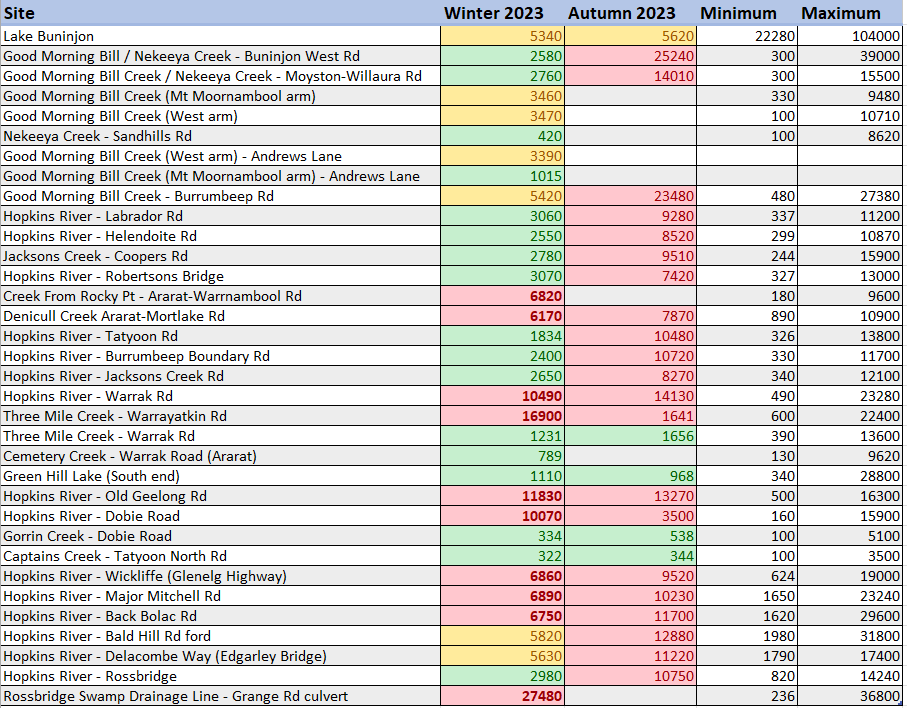
EC levels for livestock water supplies. Values for each type of livestock is the EC level at which production decline begins: beef cattle (6,200 EC μS/cm), lactating ewes and weaners (6,000 EC μS/cm), dry sheep (9,300 EC μS/cm)), horses (6,200 EC μS/cm), pigs (3,100 EC μS/cm), poultry (3,100 EC μS/cm).

